- Achievable all-electric driving claim
- Excellent aftersales package
- Cheap to run if kept charged
- Dated interior elements
- Price increase over petrol model
- Missing some equipment, like a digital speedometer
The Mitsubishi Eclipse Cross has been sold in Australia since 2018 to reasonable success – while it doesn’t hit the sales highs of its ASX sibling, it’s still sold almost 7,000 units locally and is reasonably popular. Part of its appeal is offering both a regular petrol model, as well as a potentially very efficient plug-in hybrid, as well as the typically strong value that you’d expect from the Mitsubishi brand in Australia. With many Australian new car buyers looking for more efficient transport, we tested the 2023 Mitsubishi Eclipse Cross Aspire PHEV to see whether if it’s worth the extra cost over the standard petrol model.
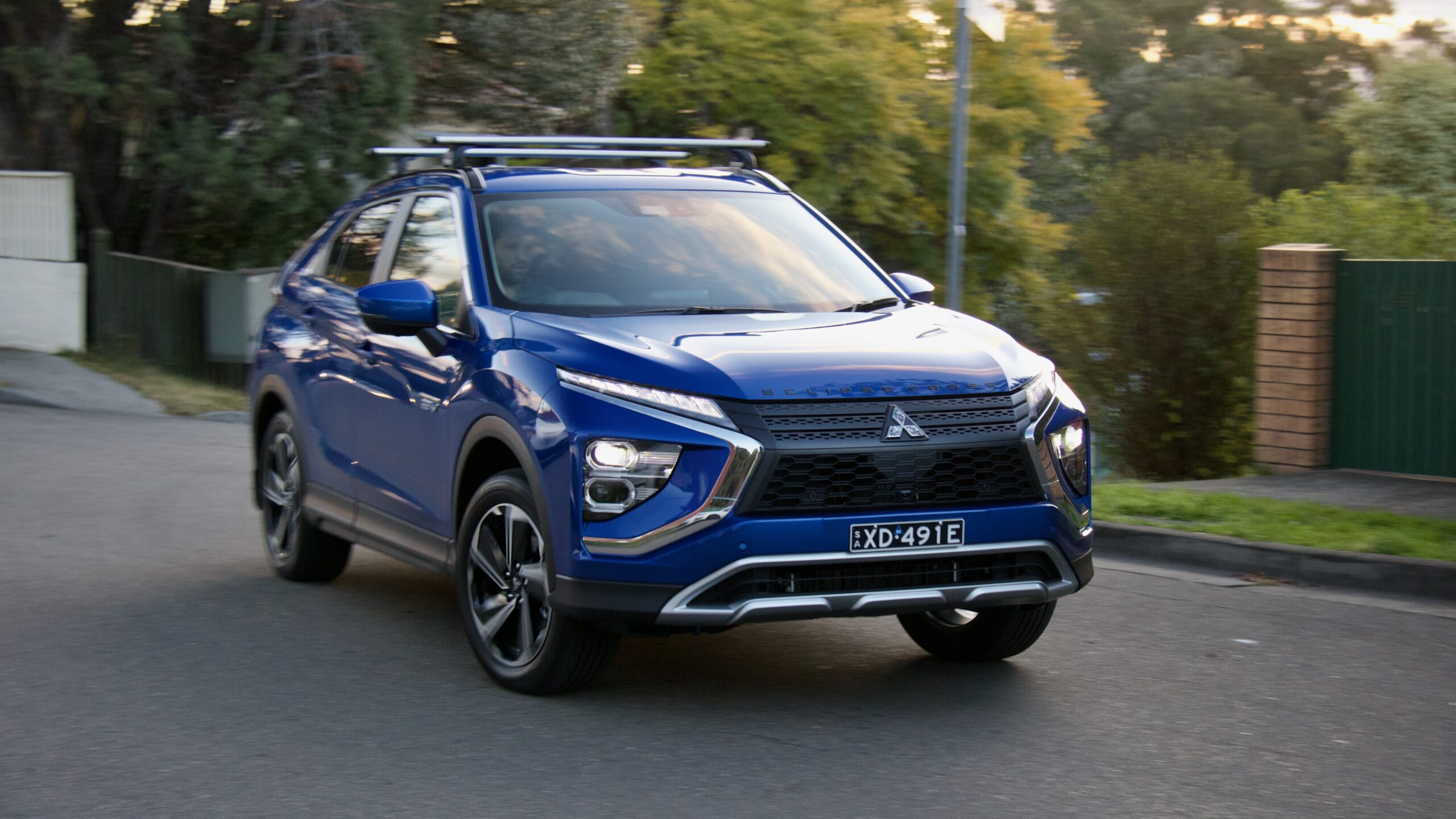
While there are seemingly endless electric SUVs available locally, there are surprisingly not too many smaller plug-in hybrid SUVs for sale: the Alfa Romeo Tonale PHEV, Peugeot 3008 Hybrid, Cupra Formentor PHEV and MG HS Plus EV are main rivals to the Mitsubishi Eclipse Cross PHEV.
Price & Equipment: 6.5/10
There are three variants of the 2023 Mitsubishi Eclipse Cross PHEV in the current line up. The range starts with the $47,290 plus on-road costs ES PHEV, steps up to the $51,240 +ORC (roughly $56,000 drive away) Aspire PHEV and then ends with the range-topping $55,990 +ORC Exceed PHEV. There are no optional extras on the Eclipse Cross range except for metallic paint, though a range of dealer-fit accessories – such as the roof racks and boot mat fitted to our test car – is also available.
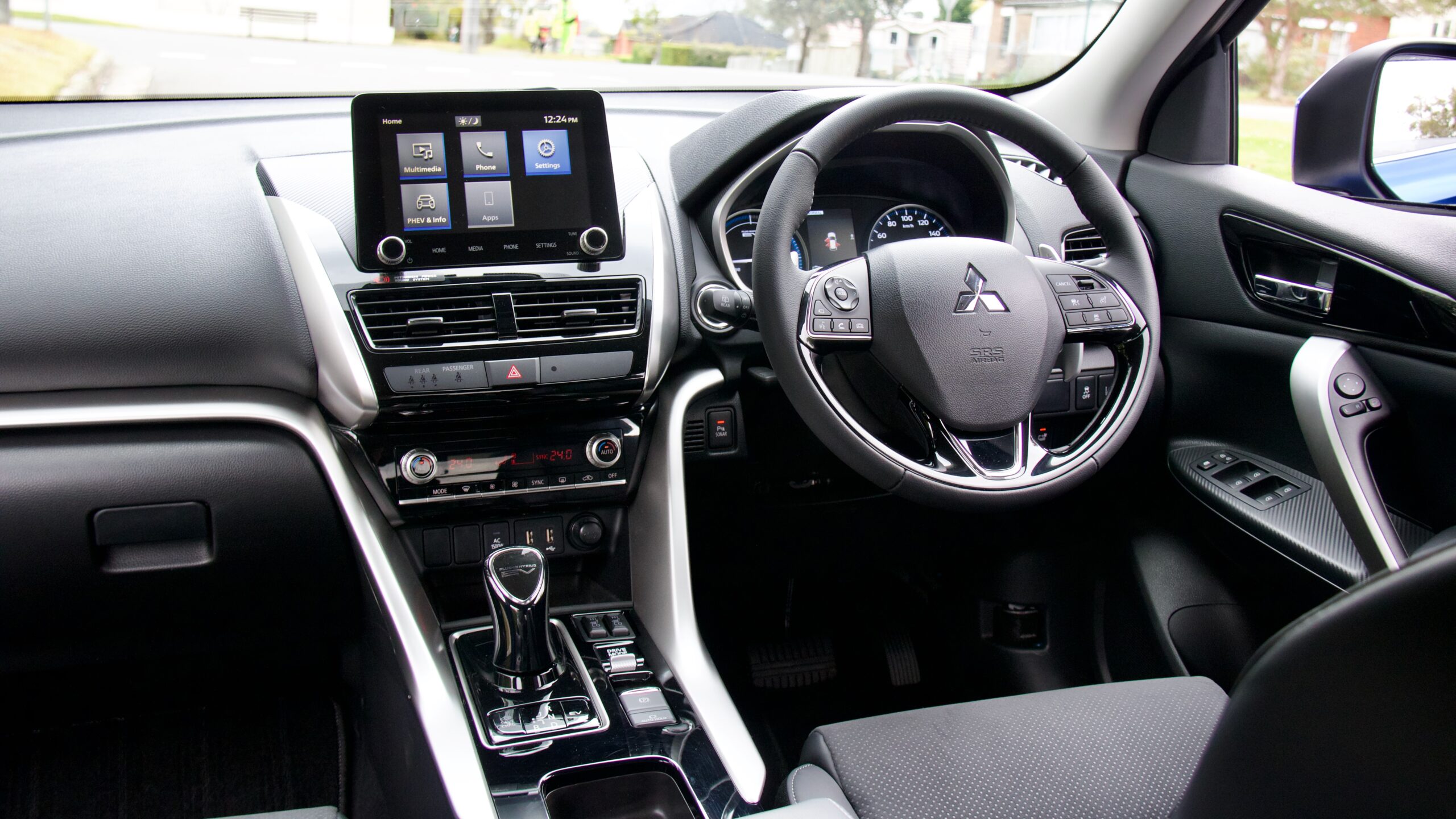
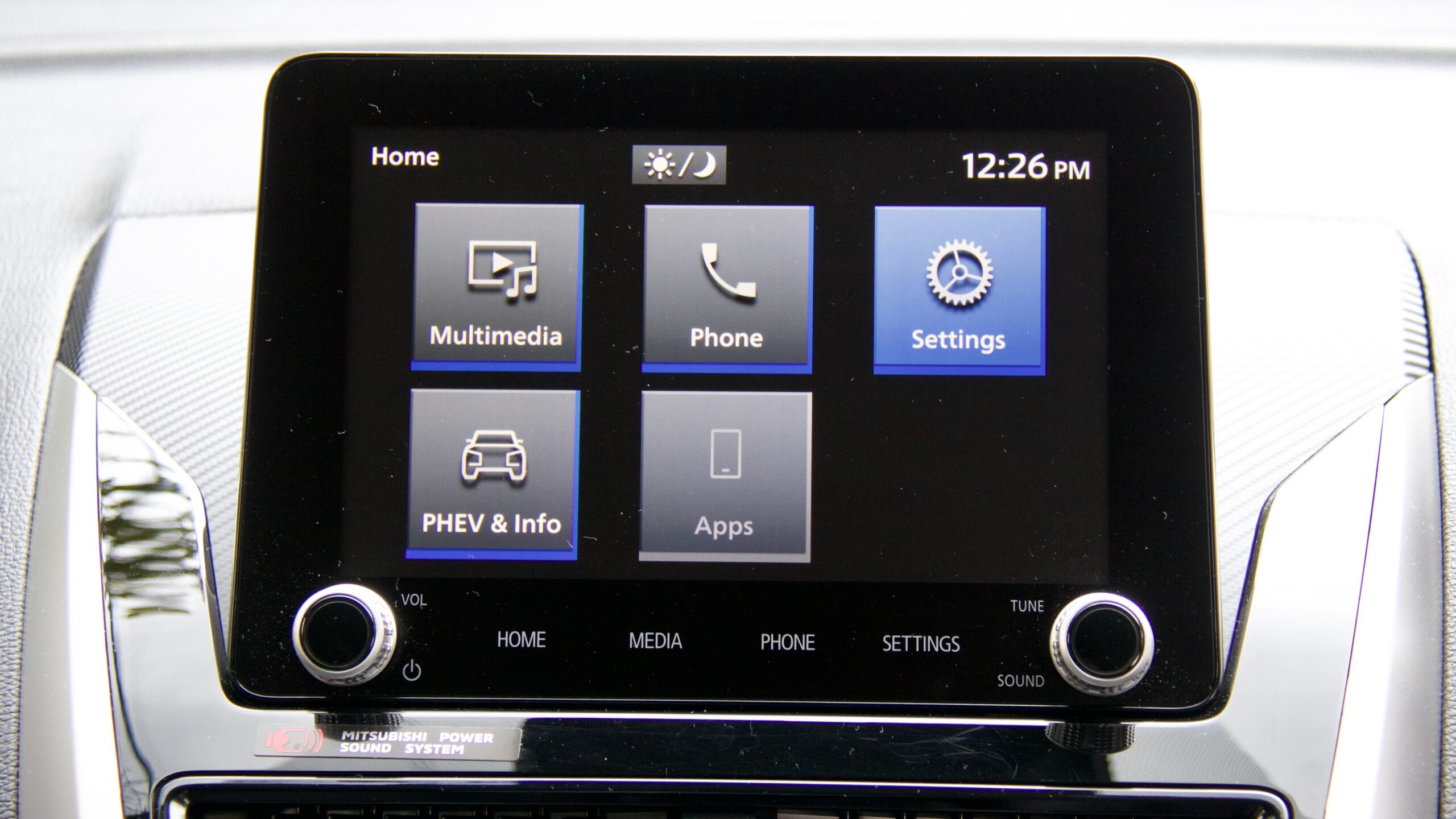
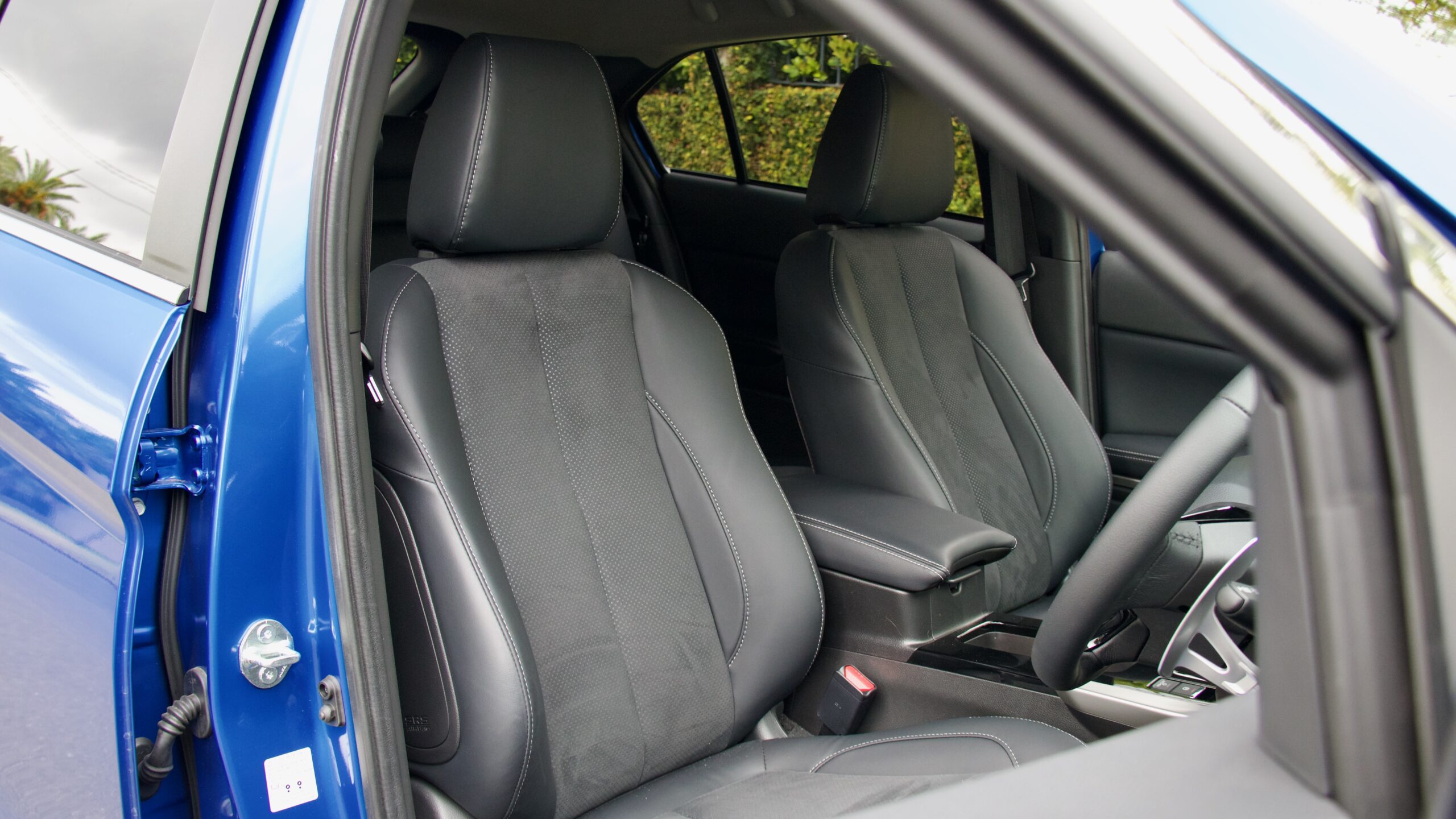
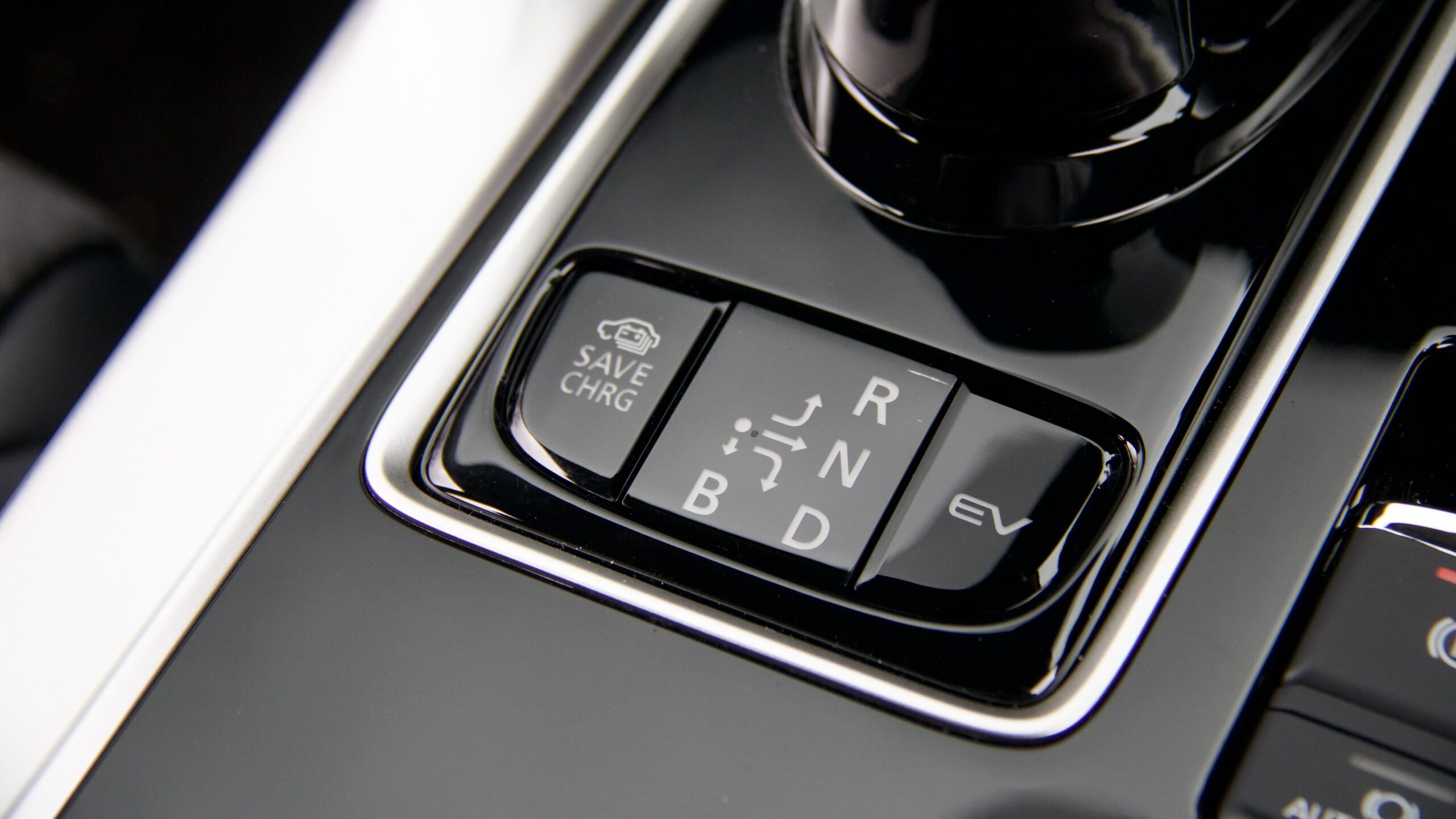
2023 Mitsubishi Eclipse Cross Aspire PHEV standard equipment:
- 18-inch alloy wheels
- Dusk-sensing automatic LED headlights with LED front fog lights
- Roof rails
- Automatic wipers
- Synthetic leather and suede upholstery
- 8-way electrically adjustable driver’s seat
- Heated front seats
- Dual-zone climate control
- 8.0-inch touchscreen
- Wired Apple CarPlay and Android Auto
- AM/FM/DAB+ digital radio
- Eight-speaker sound system
- Selectable driving modes (eco, electric, hybrid, battery save, battery charge)
- Rear privacy glass
- Keyless entry with push button start
- Auto-dimming rear mirror
- Heated and auto-folding exterior mirrors
- Electric parking brake with auto hold
- 4x USB-A ports
- 1,500W/240V AC power socket
The 2023 Mitsubishi Eclipse Cross range earned a five-star ANCAP safety rating in 2017 with scores of 97 per cent for adult protection, 78 per cent for child protection, 80 per cent for pedestrian protection and 58 per cent for safety assist.
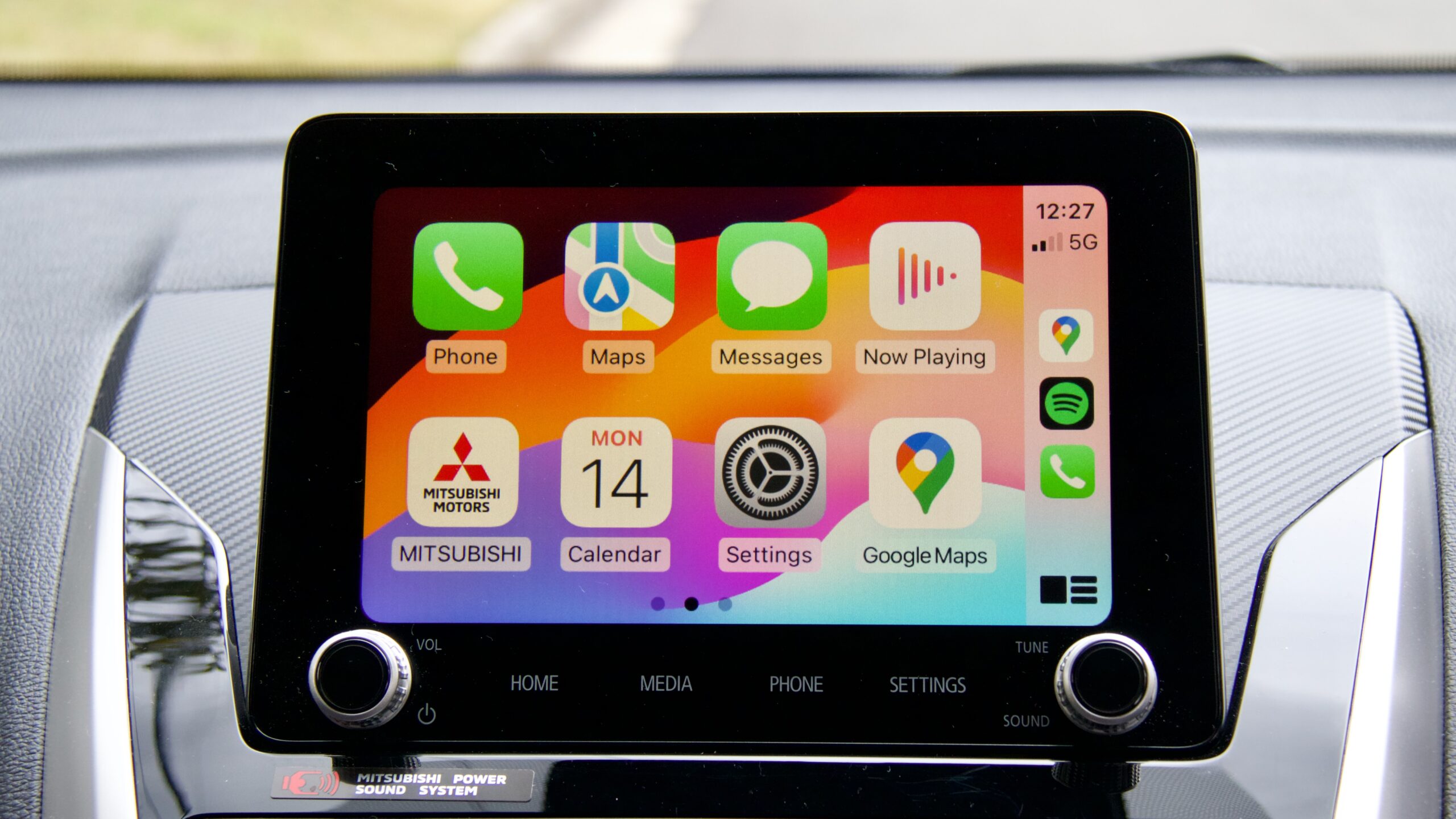
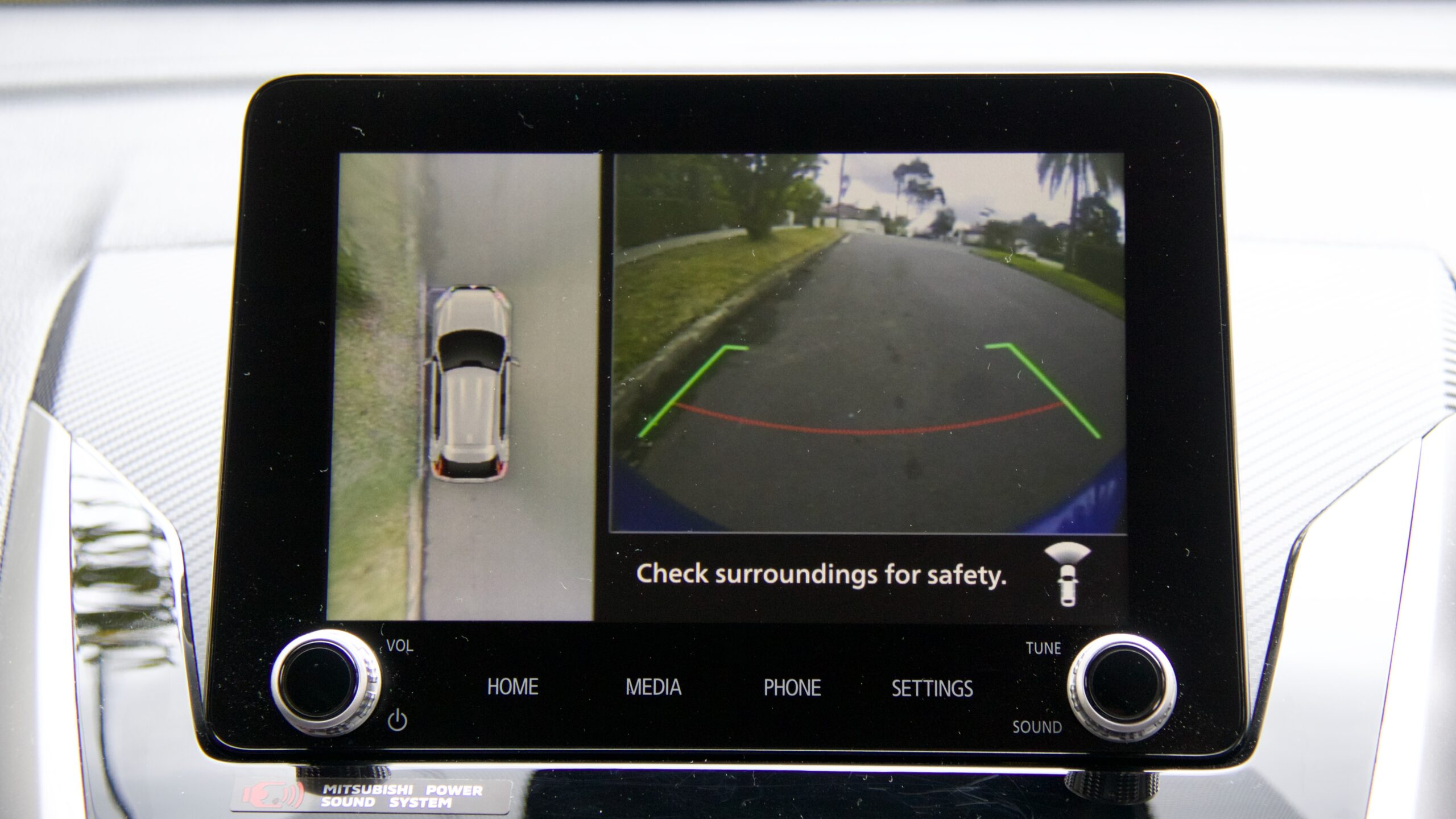
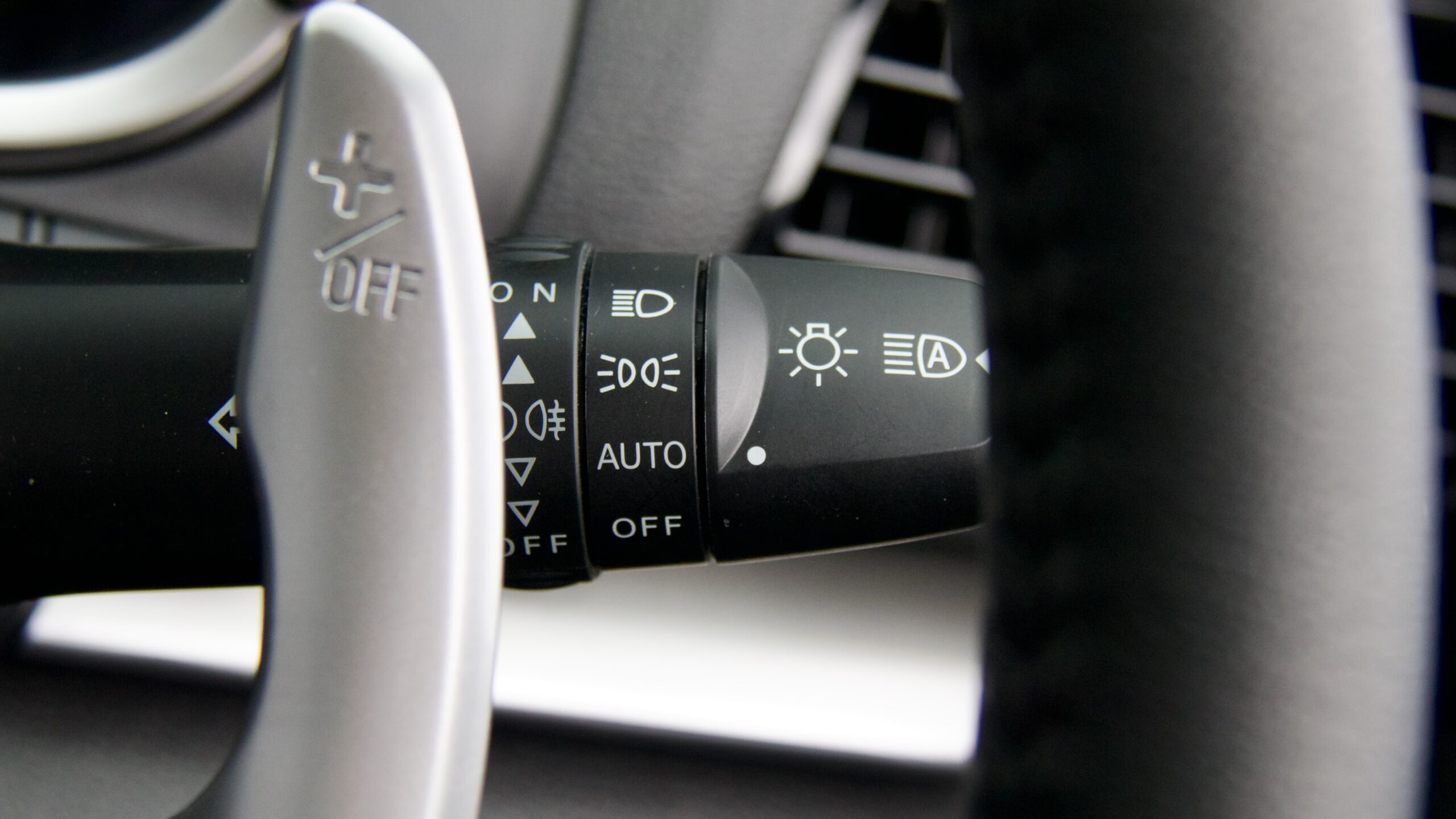
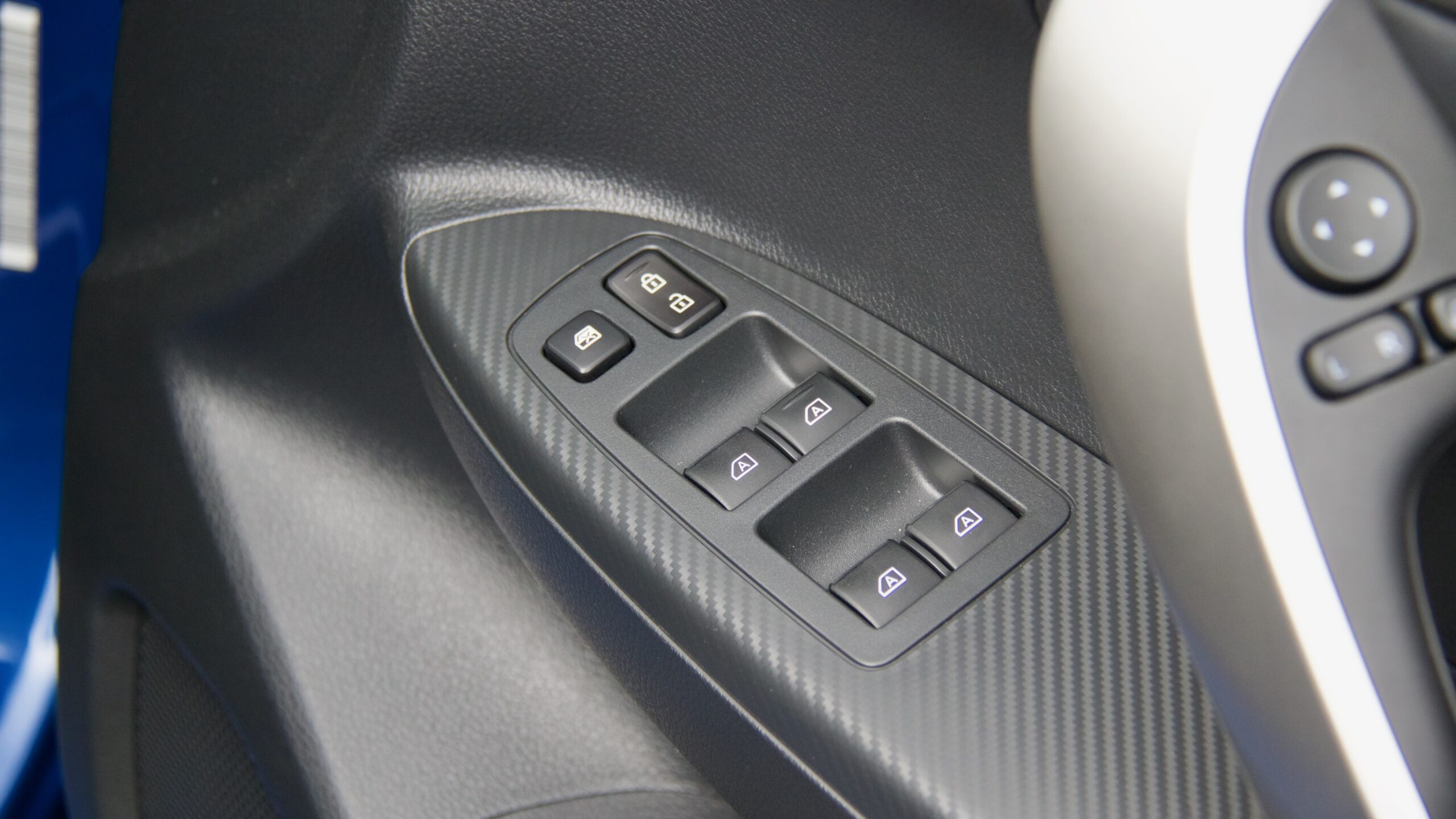
2023 Mitsubishi Eclipse Cross Aspire PHEV safety equipment:
- Seven airbags
- Auto emergency braking (AEB) with pedestrian detection
- Lane departure warning and lane keep assist
- Blind-spot monitoring with rear cross-traffic alert
- Adaptive cruise control
- Auto high beam
- Front and rear parking sensors
- 360-degree surround view camera
- Automatic high beam
2023 Mitsubishi Eclipse Cross Aspire PHEV colour range:
- White Solid
- Black – Pearl ($740)
- Titanium ($740)
- Sterling Silver ($740)
- Lightning Blue (on our test car – $740)
- Red Diamond ($940)
- White Diamond ($940)
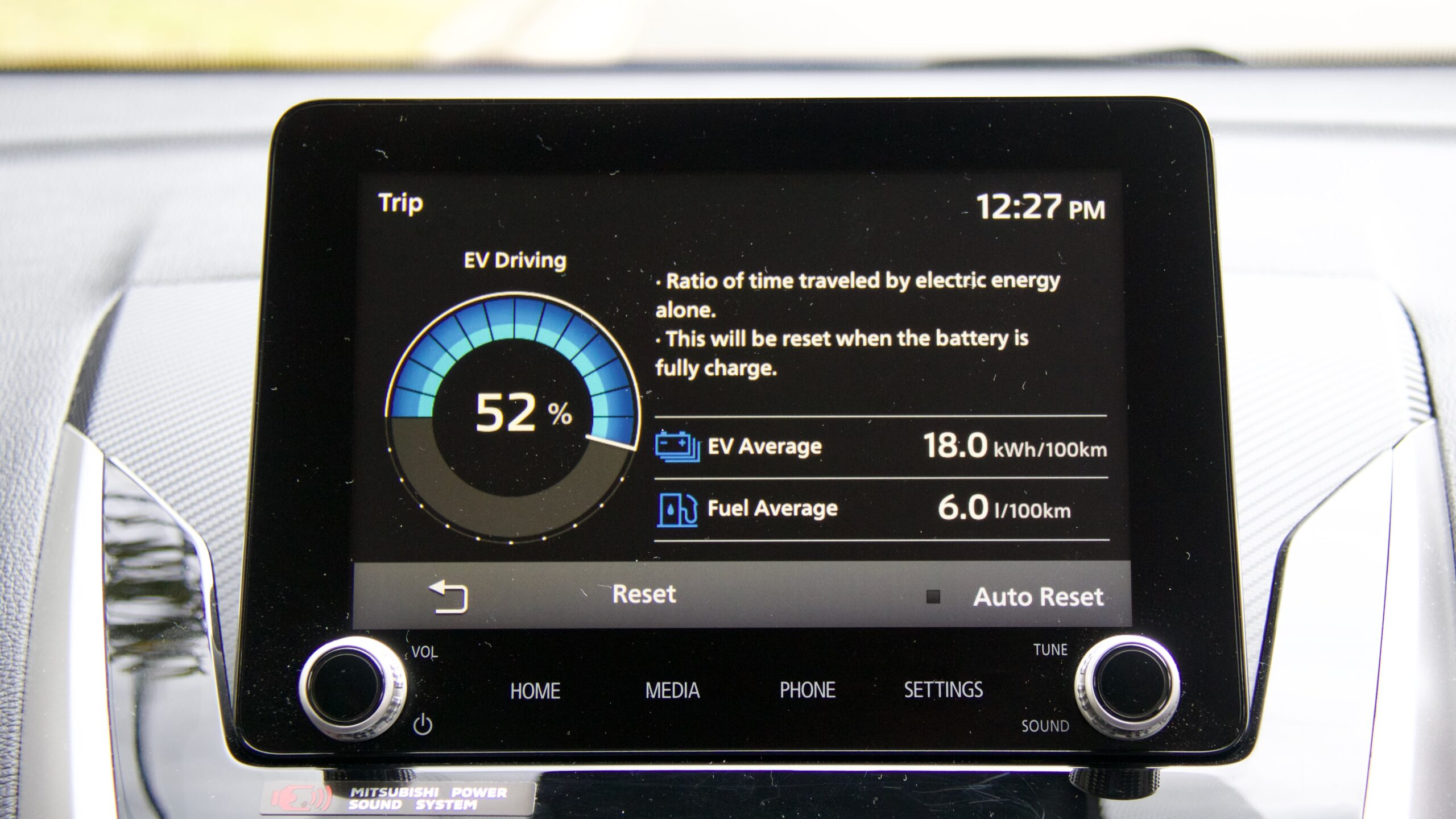
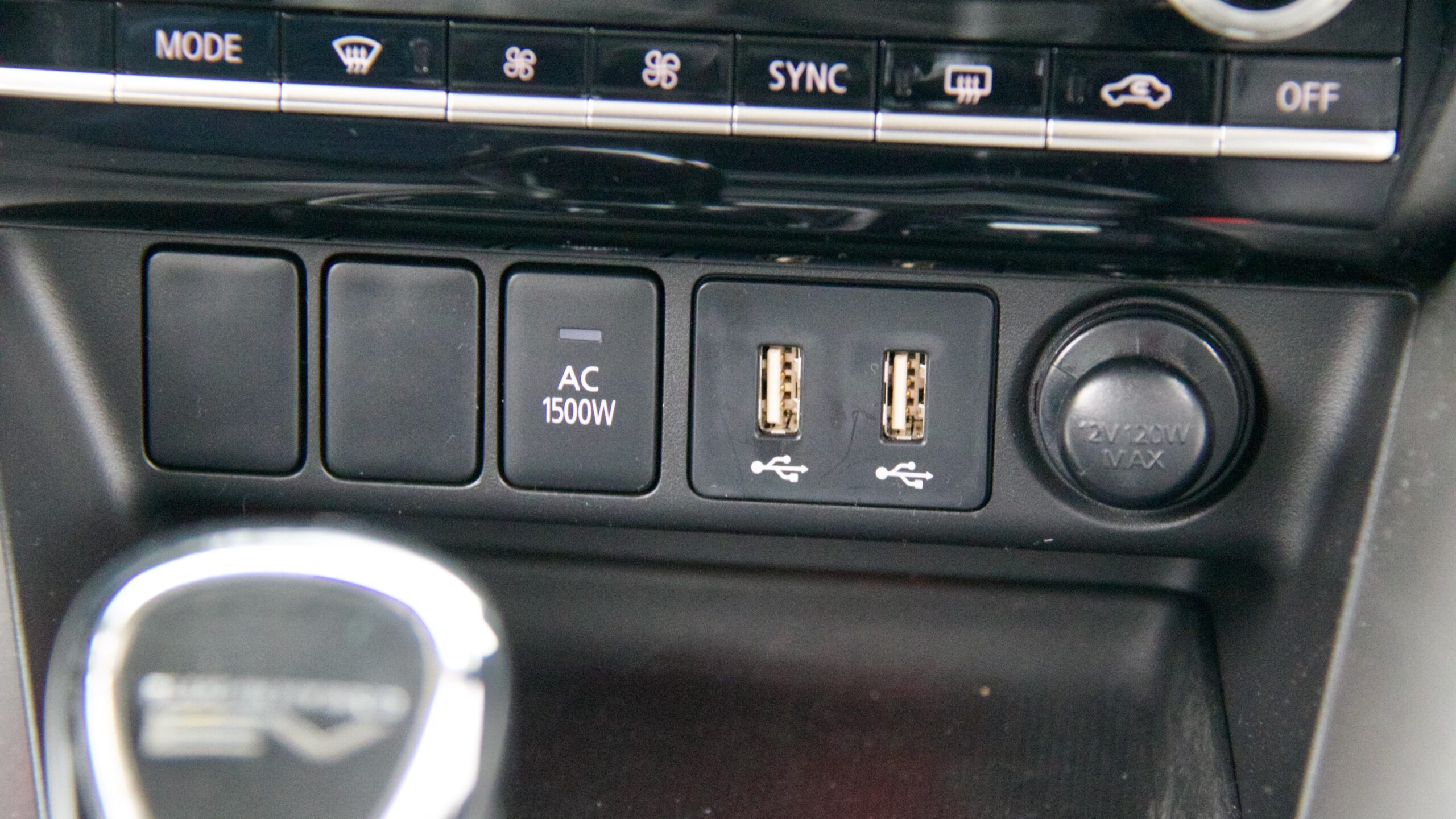
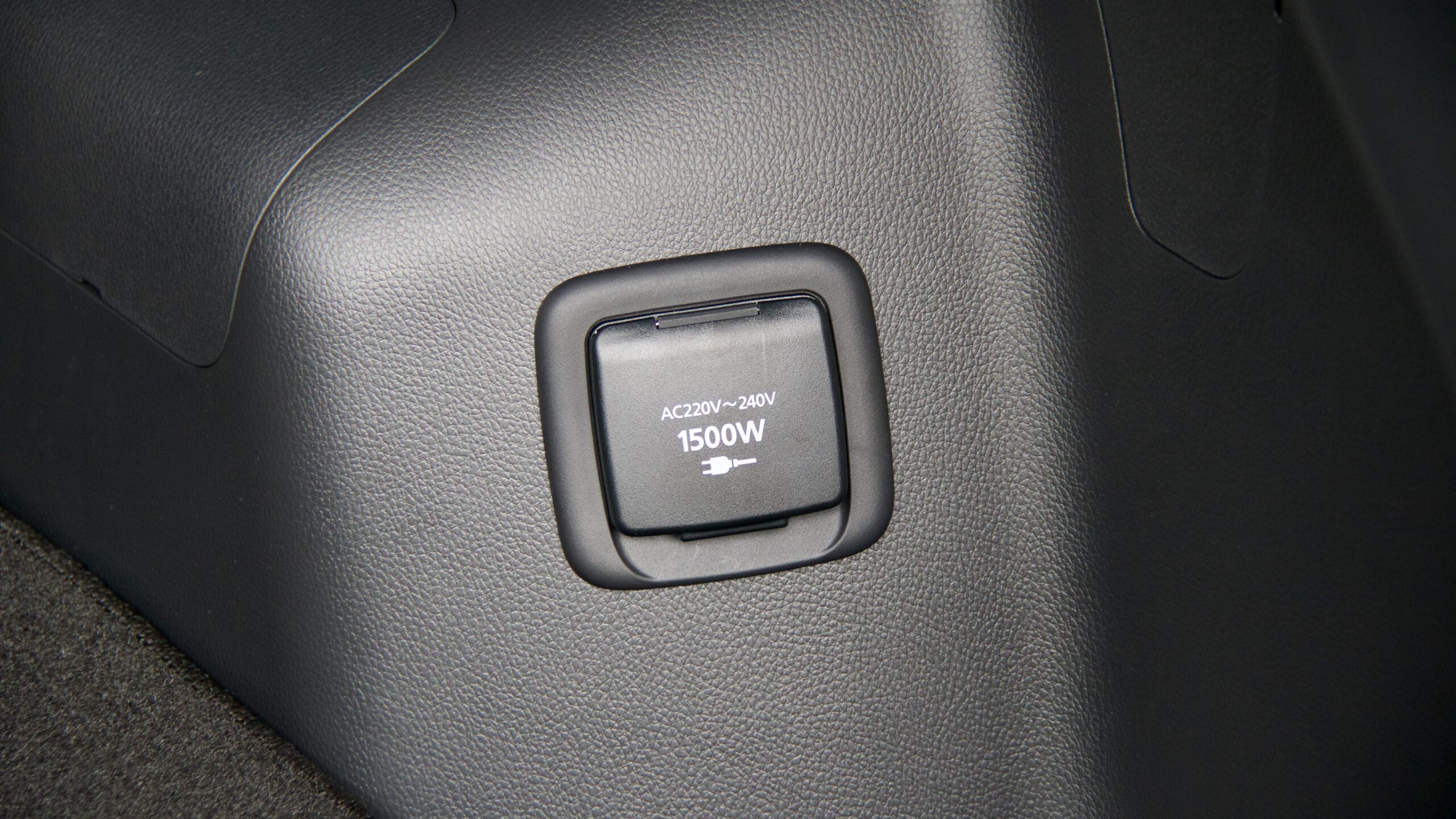
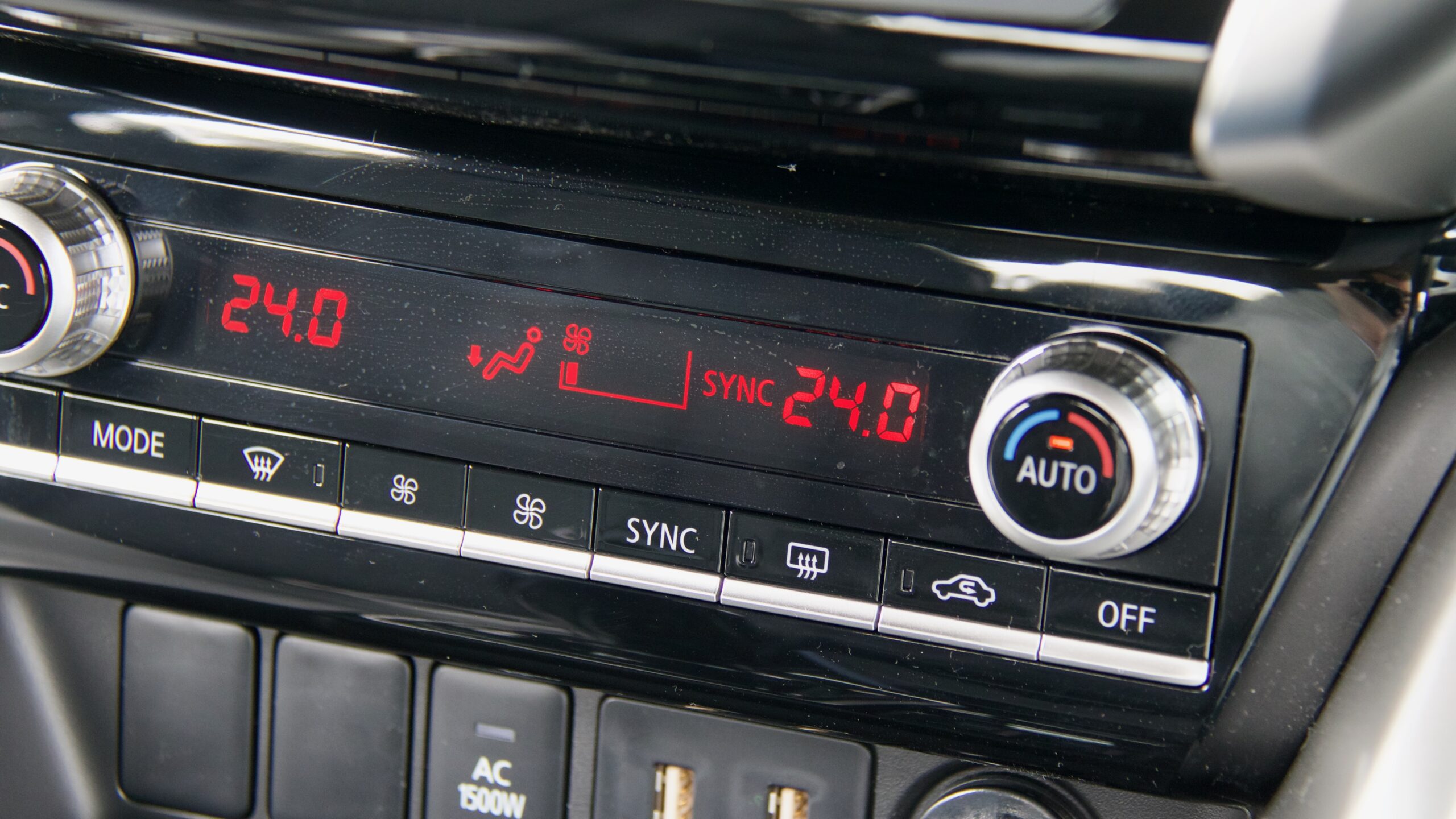
The only direct rival to the Eclipse Cross Aspire PHEV is the MG HS Plus EV Essence which is priced from $52,690 drive away (around $3,500 less than the Mitsubishi). Compared to the MG, the Mitsubishi adds an extra airbag, front parking sensors, eight speakers (compared to six) and digital radio.
However, the MG adds satellite navigation, a rear fog lamp, a fully digital driver’s display, traffic sign recognition, tyre pressure monitoring, rear air vents, ambient lighting and a larger 10.1-inch touch screen over the Eclipse Cross.
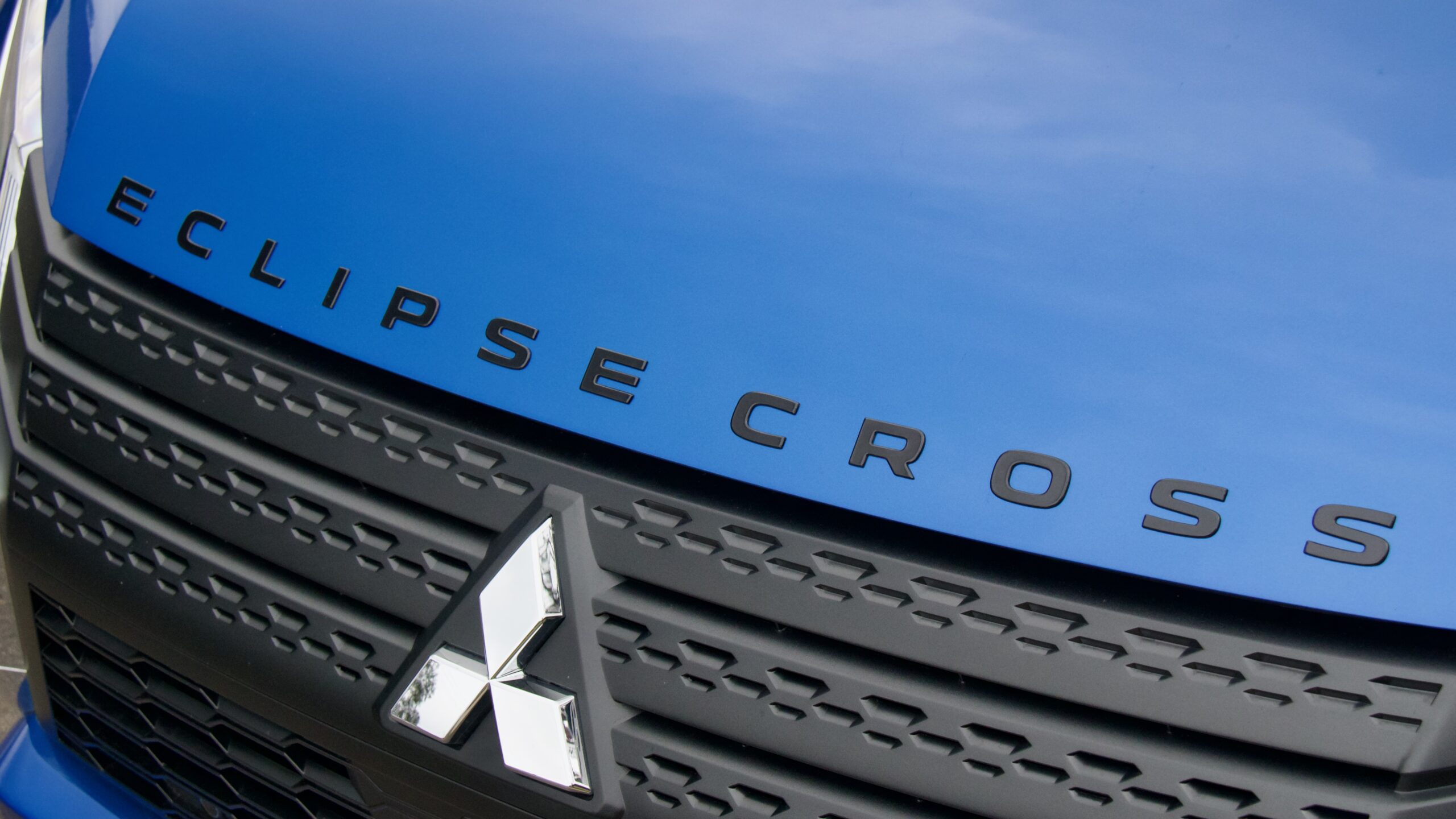
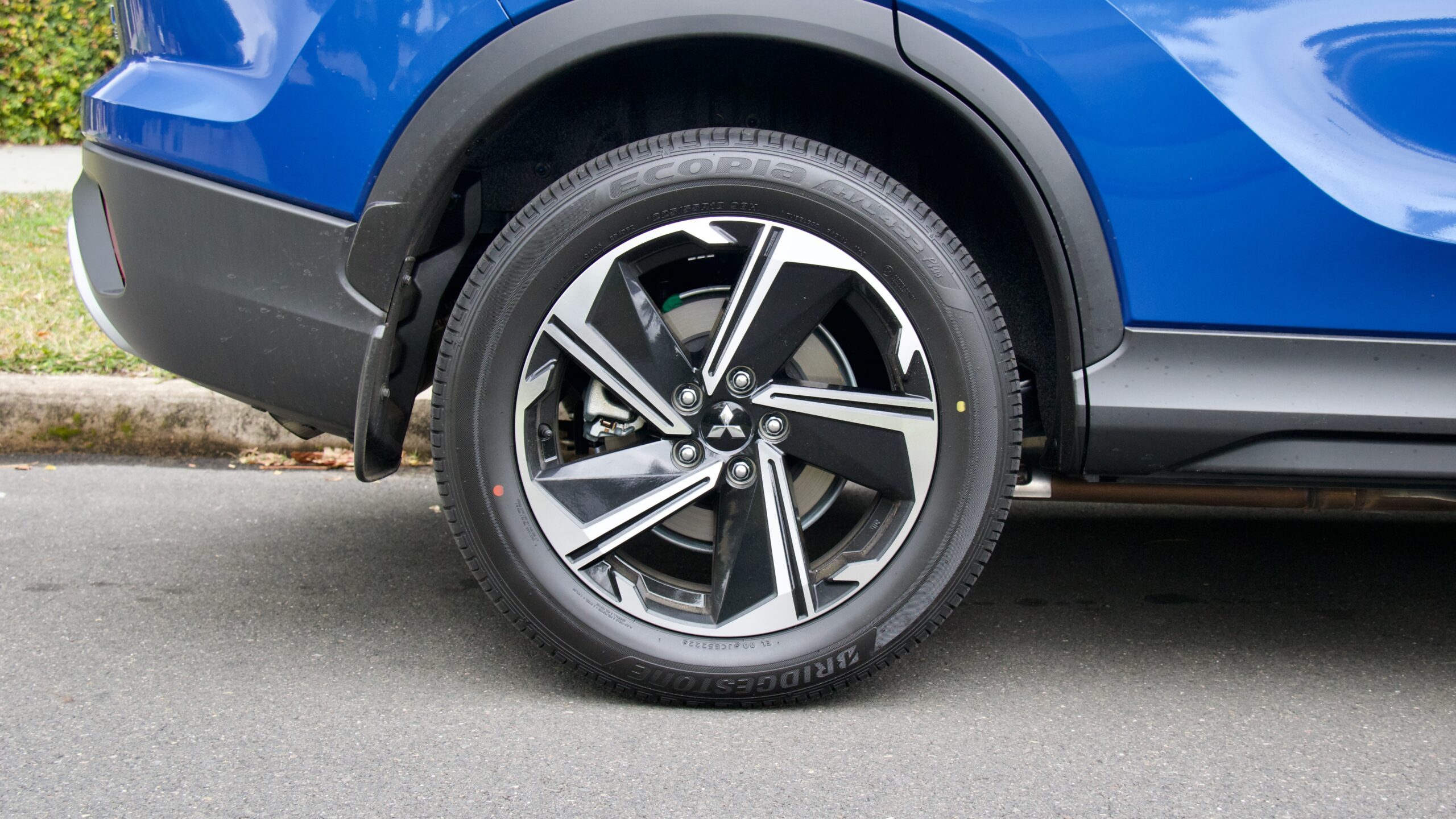
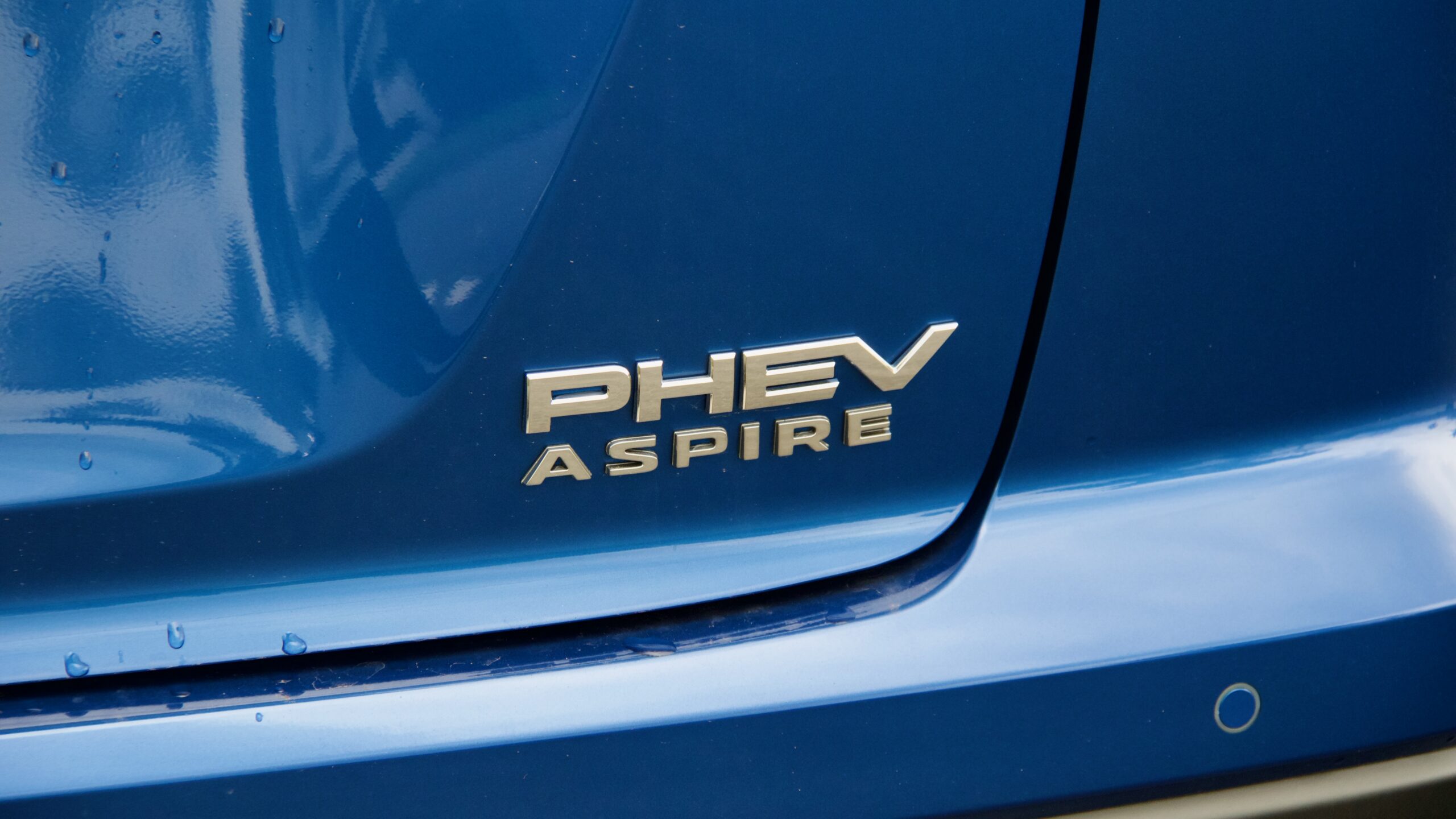
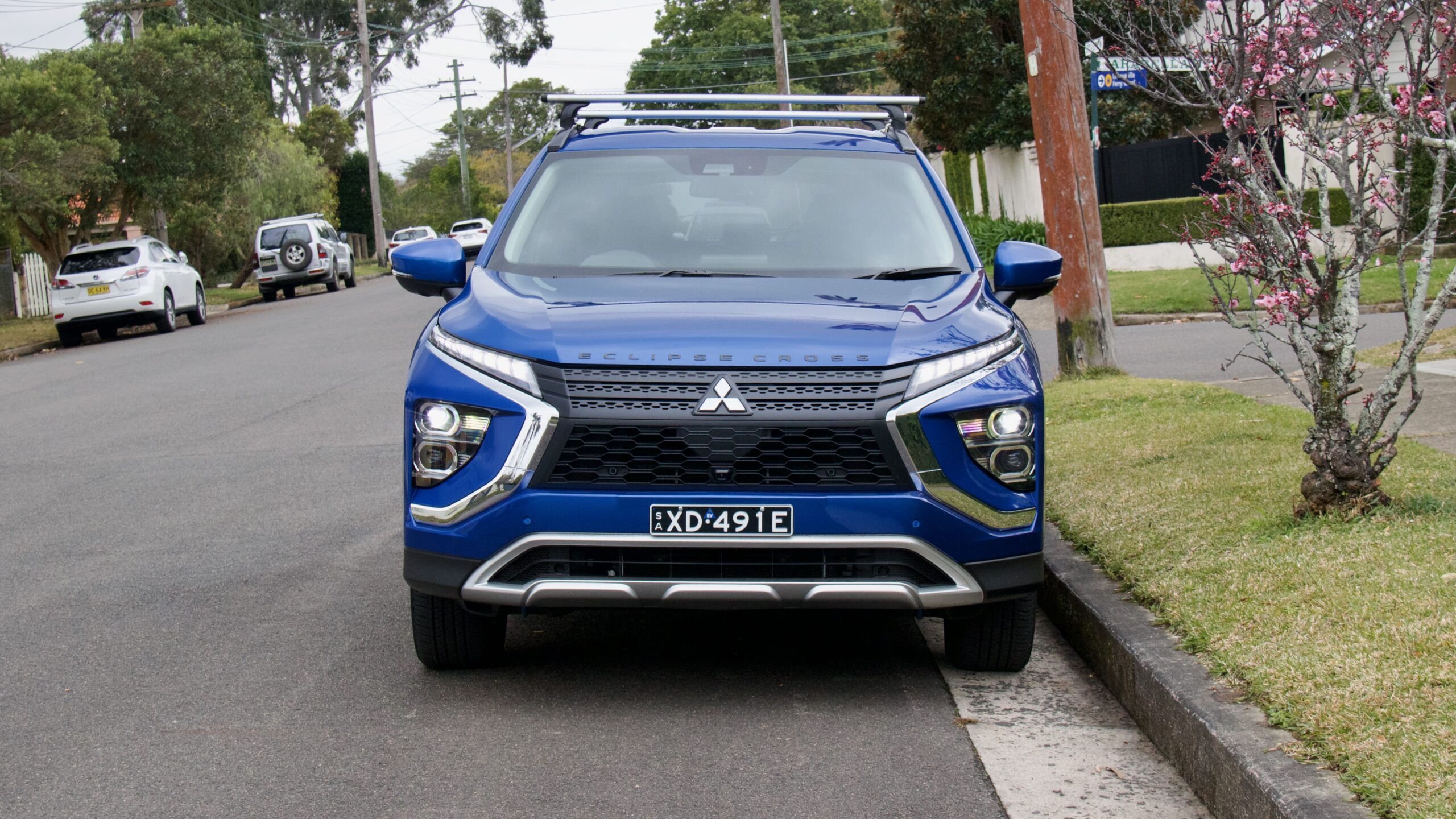
Spec for spec, is the Eclipse Cross Aspire PHEV worth $3,500 more than the MG? On paper, we see the extra appeal of the MG’s longer equipment list, though we think that both cars are more expensive than they should be. It is worth noting that a petrol Eclipse Cross Aspire is a full $14,750 less than the plug-in hybrid and that sort of coin buys a lot of fuel.
Performance & Economy: 8/10
Powering the 2023 Mitsubishi Eclipse Cross PHEV is a 94kW/199Nm 2.4-litre four-cylinder petrol engine that’s matched to 60kW/137Nm front and 70kW/195Nm rear electric motors, which draw power from a 13.8kWh lithium-ion battery mounted under the rear floor. Mitsubishi doesn’t give combined power and torque figures. The drivetrain is more than peppy enough for everyday driving and when running on electric-only mode, the petrol engine rarely kicks in unless maximum acceleration is called for, or you’re at highway speeds. When it kicks in, the petrol engine is surprisingly quiet.
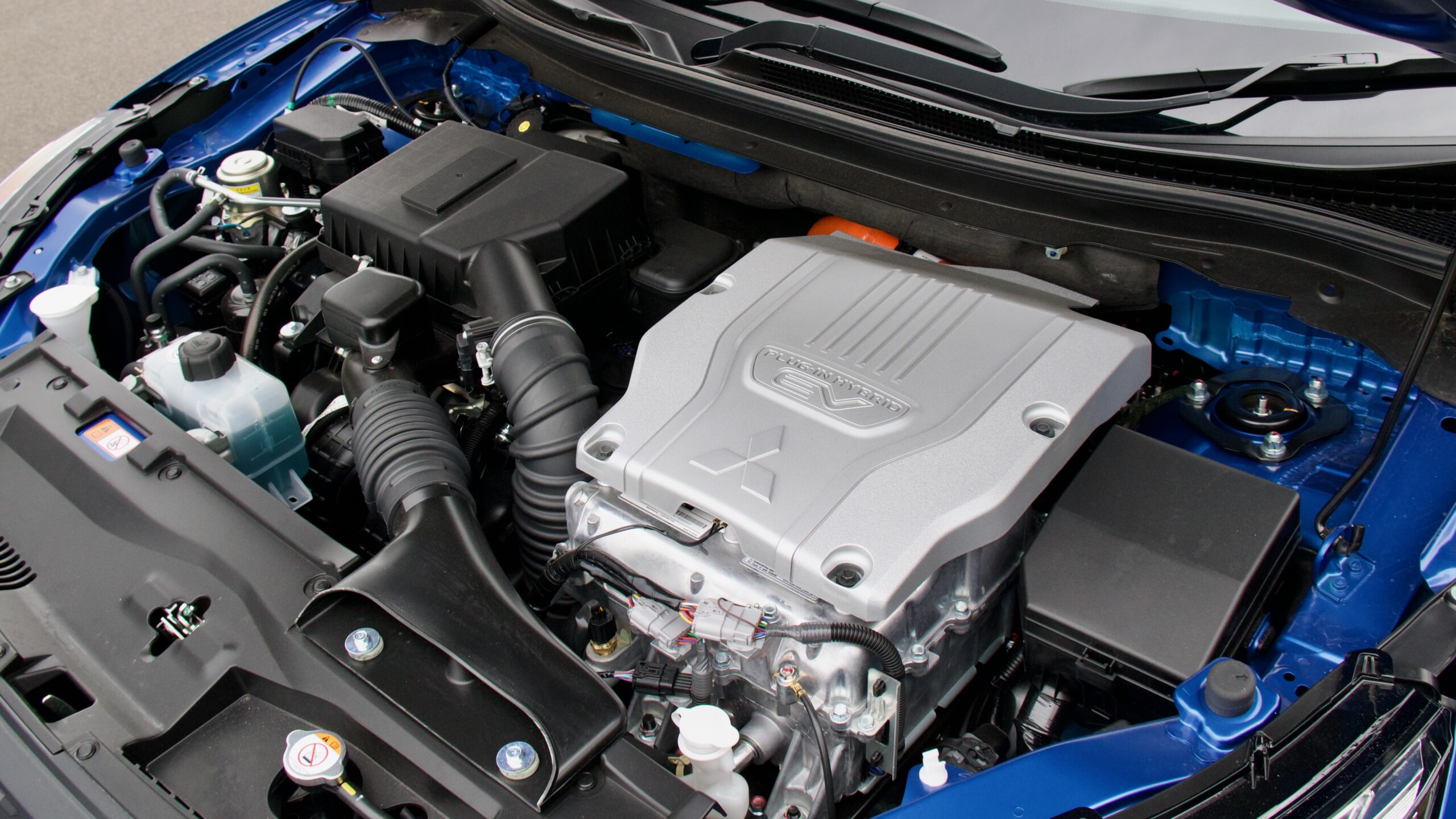
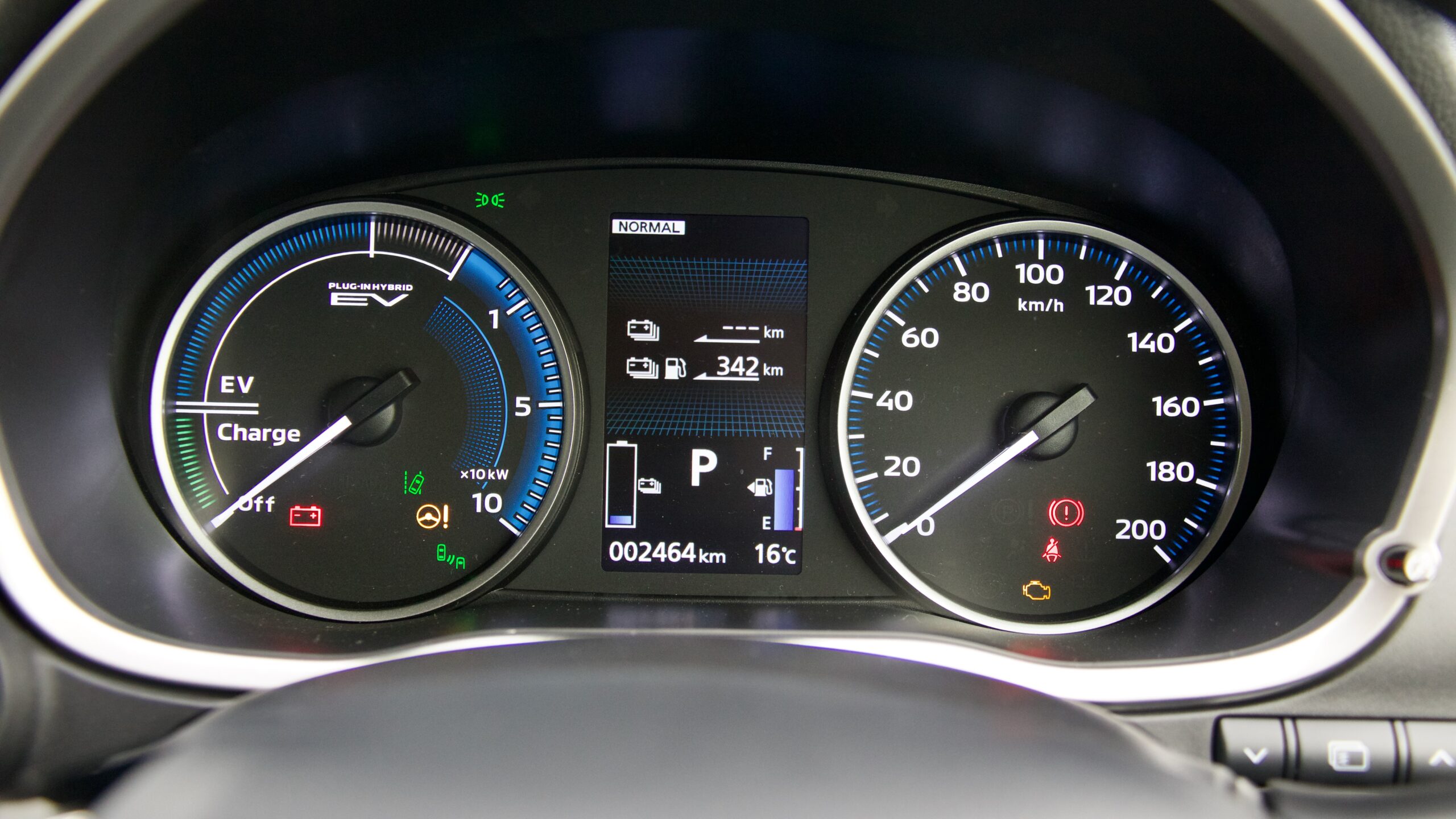
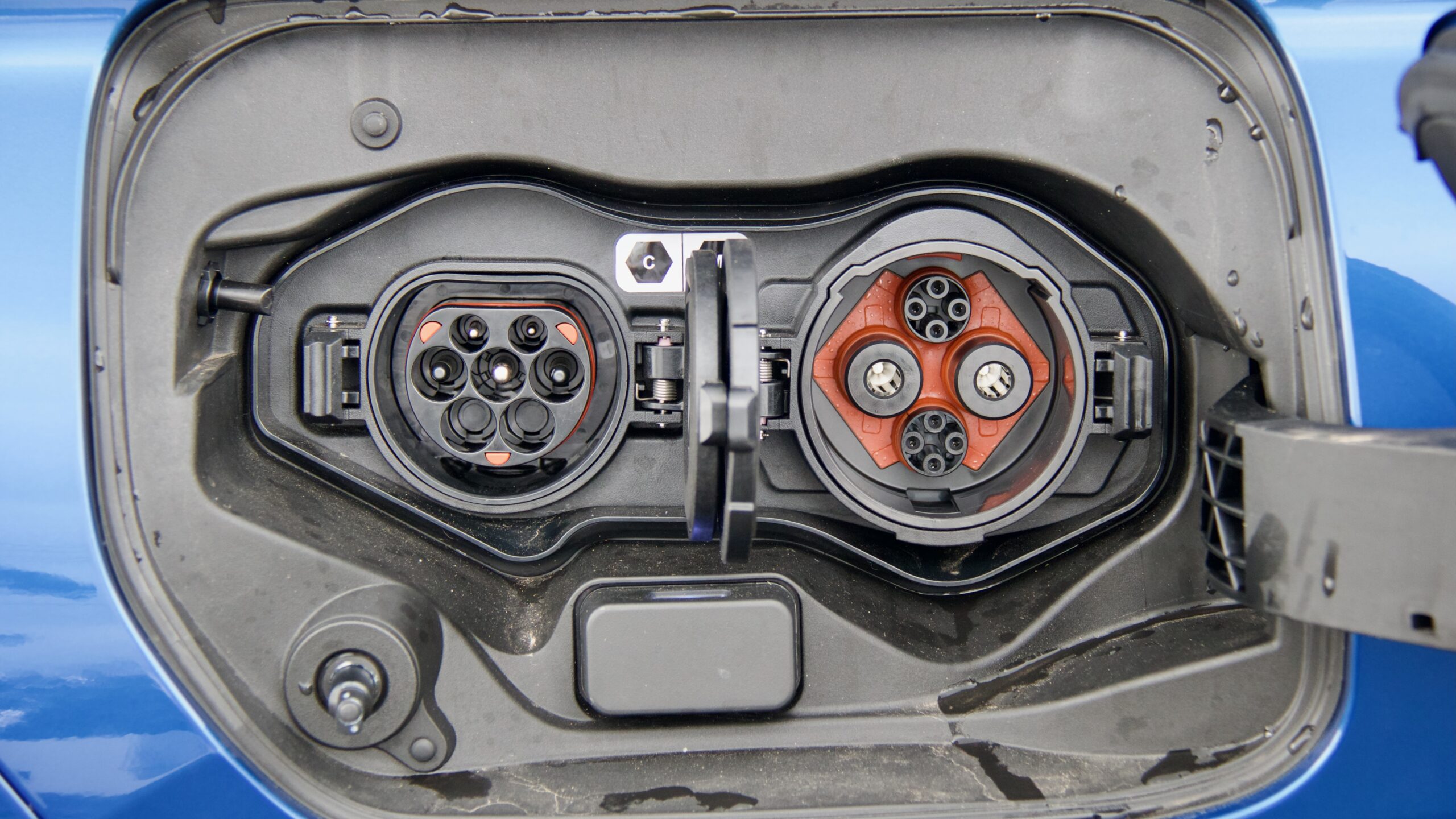
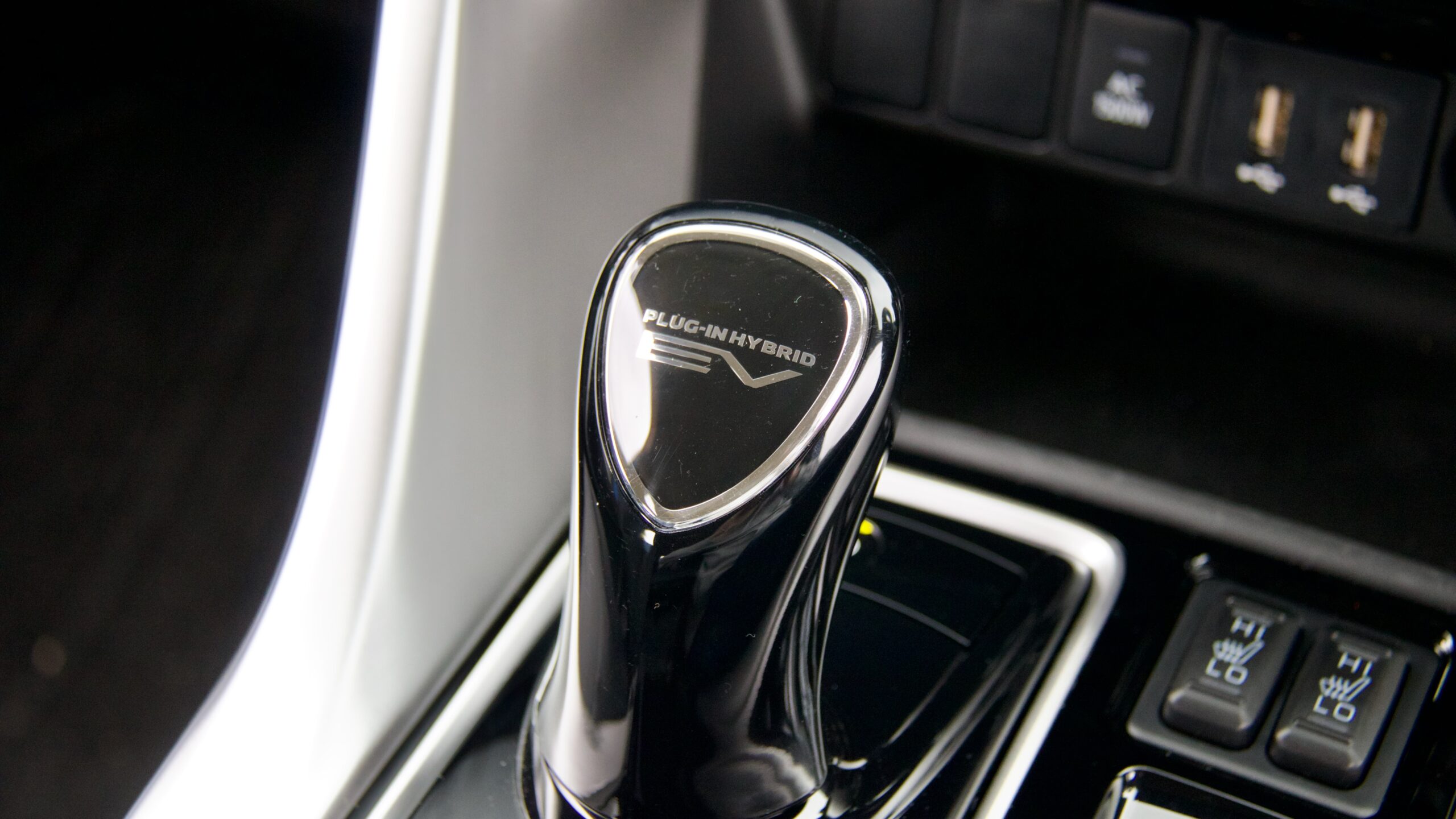
Helping the Eclipse Cross’ fuel economy and ability to run solely on electric power is its regenerative braking, which can be adjusted using the paddle shifters or gear selector. Unlike regular hybrid cars, it’s possible to add real driving range using them if you plan your braking. As with other electric cars as well, it’s possible to drive mostly using the regenerative braking and not the actual brake, which is partly why you can drive the Eclipse Cross PHEV so much on electric power. The trip computer tells you how far (as a percentage) you’ve driven electrically and there’s also a comprehensive economy computer in the central touchscreen, which is fun to monitor.
Mitsubishi claims that the Eclipse Cross will use just 1.9L/100km of fuel and an all-electric range of 55km – that’s versus the MG HS plus EV’s official 1.7L/100km average economy and 63km electric range. On one trip, we achieved the 55km claim on electric power, and afterwards in hybrid mode got 6.0L/100km – though this fuel consumption will vary with how it’s used. On a trip away from the big city with lots of country driving and its battery depleted, the Eclipse Cross used 7.8L/100km. Thankfully, it will happily run on 91RON regular unleaded and features a 63-litre fuel tank.
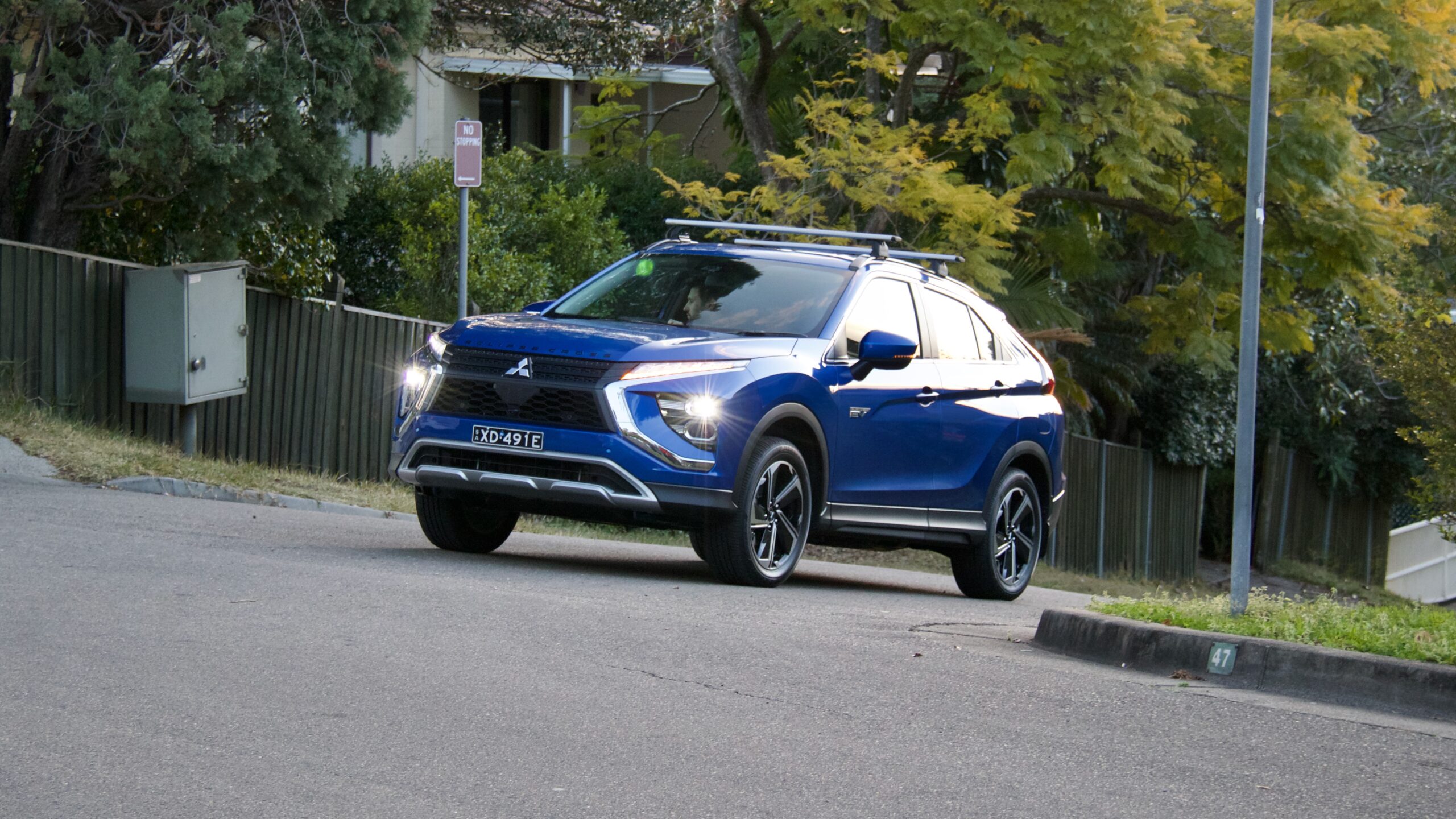
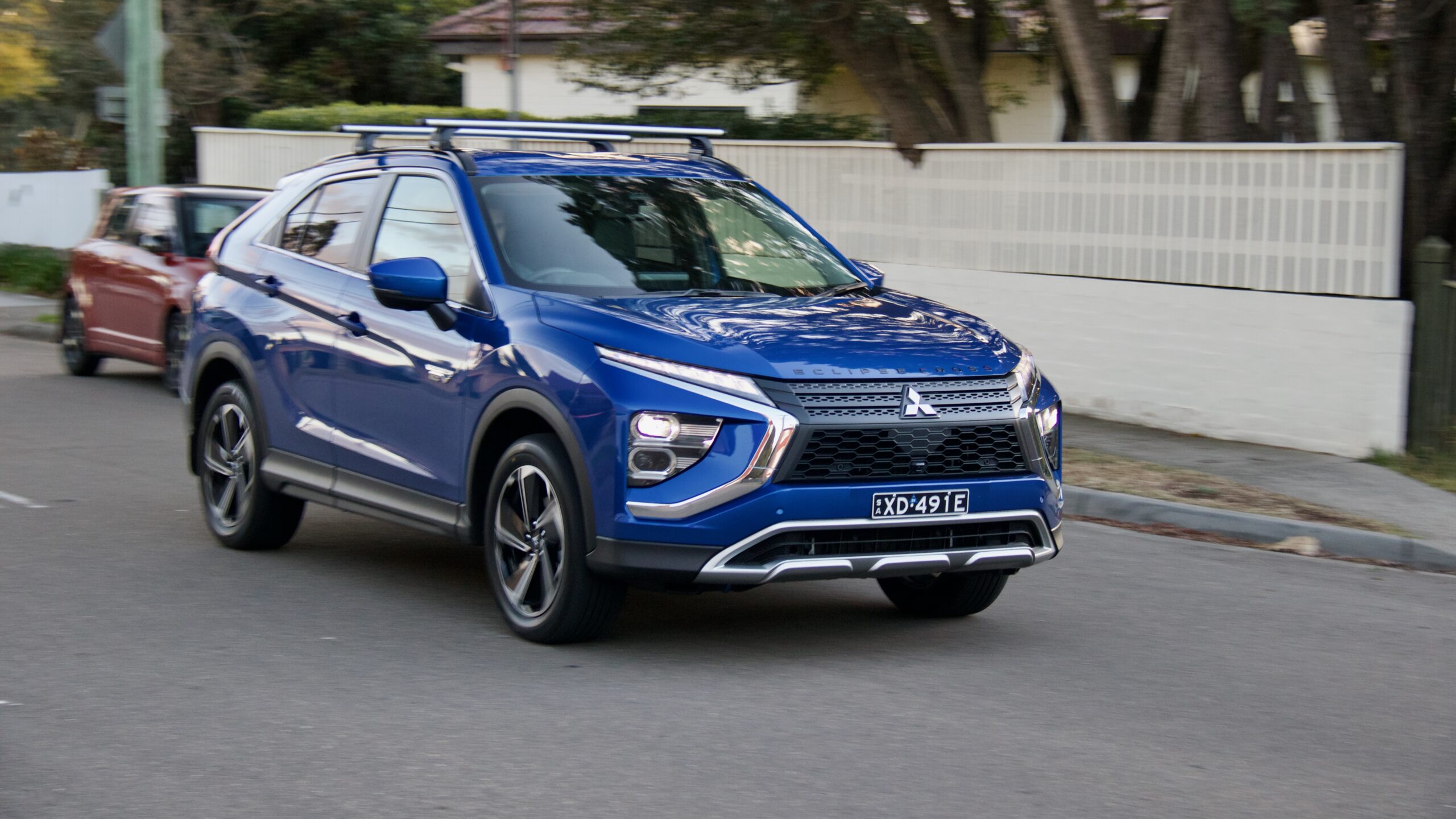
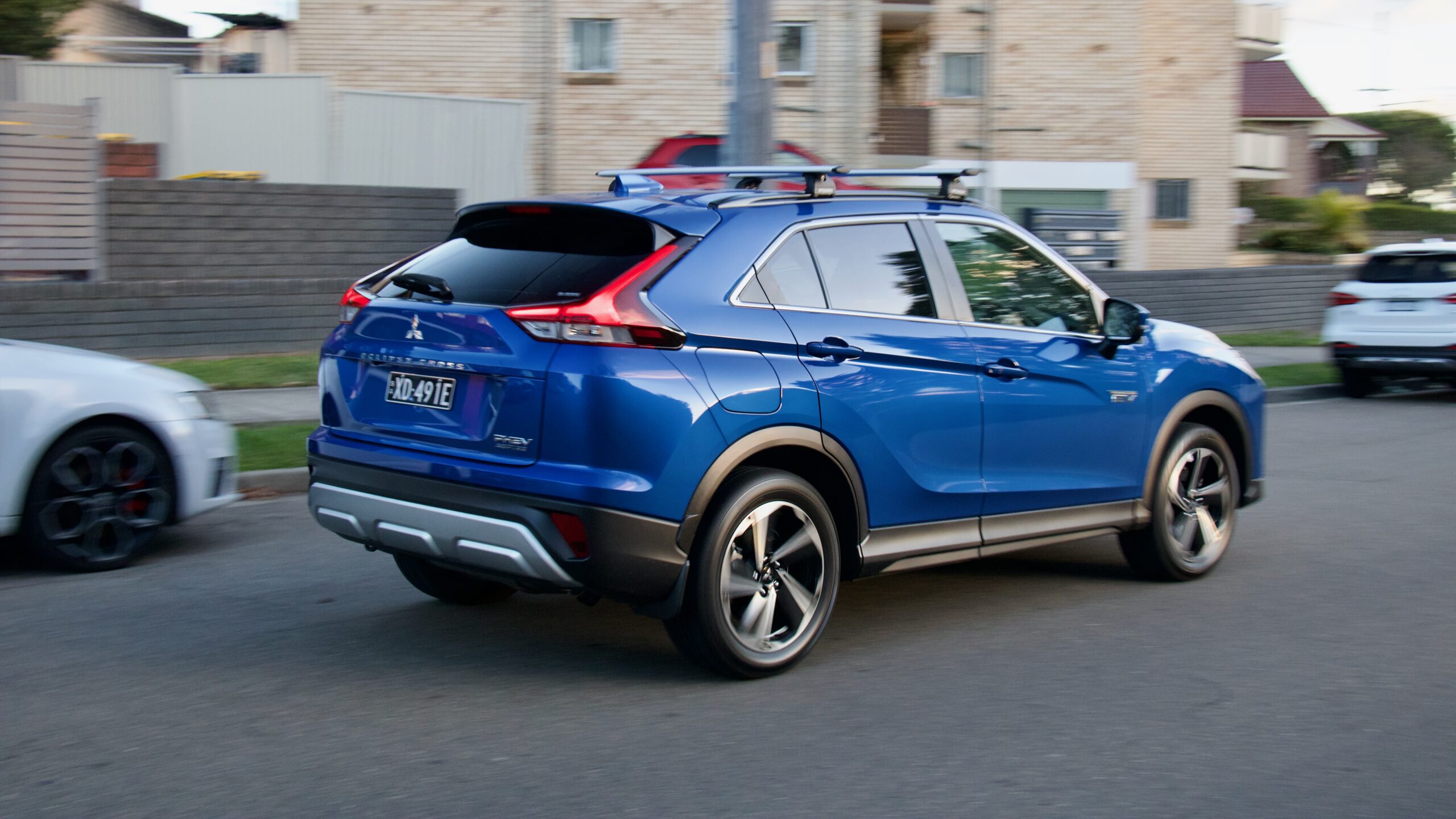
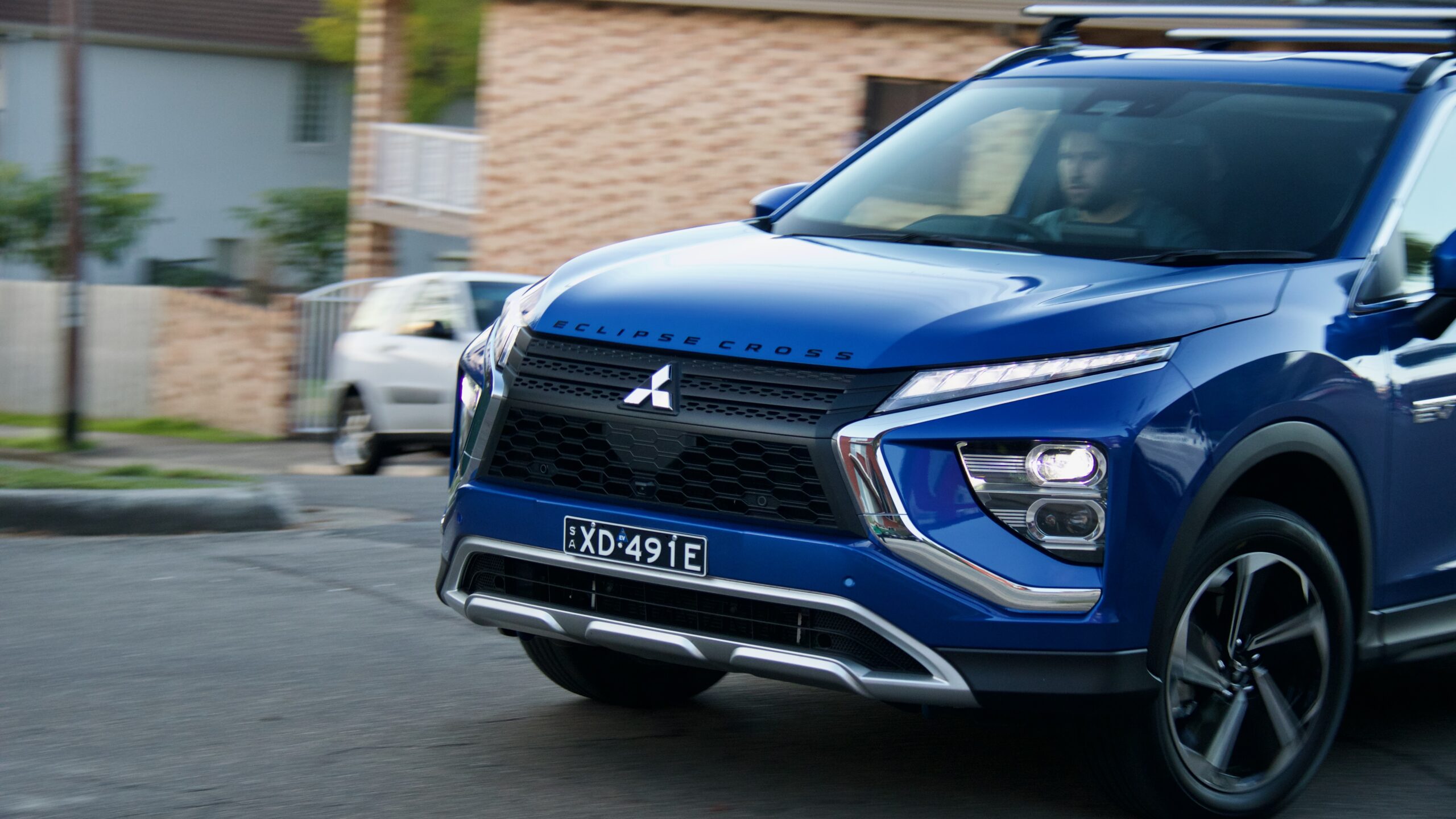
As with any other plug-in hybrid, the key to achieving anywhere near the claimed economy is having the ability to charge it often. Using a 10 amp household power point, Mitsubishi says that it takes up to seven hours to fully recharge, and using an AC charger, 3.5 hours. The Eclipse Cross PHEV can use either AC Type 2 and DC CHAdeMO plugs, which opens up the number available of available charging stations – using the latter gives a 0 to 80 per cent charge in as little as 25 minutes. The ability to be fast charged gives the Eclipse Cross – and its bigger Outlander brother – a unique selling point in the PHEV market.
Ride & Handling: 6.5/10
Riding on the same platform as the regular Eclipse Cross, the Eclipse Cross PHEV is not the greatest car to drive when compared to what is on offer from other brands. Dynamically, it’s reasonable thanks largely to its excellent all-wheel drive system, though it can roll in corners and the steering offers little feel. The ride quality is definitely worse than the regular Eclipse Cross thanks to its 300kg weight gain – around town, it’s a touch stiff and it feels underdamped as rebounds can last for ages. Thankfully though, it settles a bit at highway speeds with a more relaxed higher-speed ride quality.
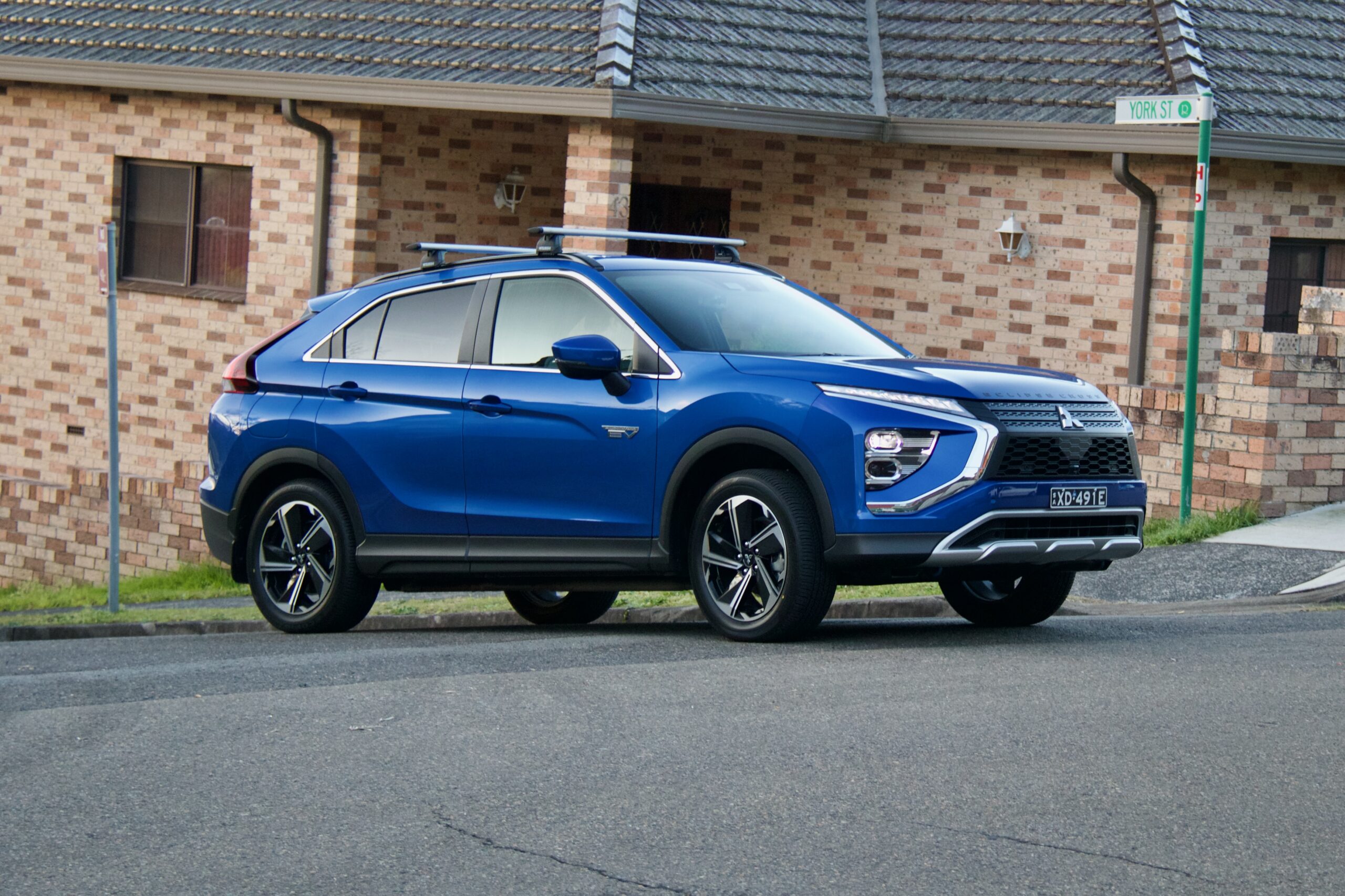
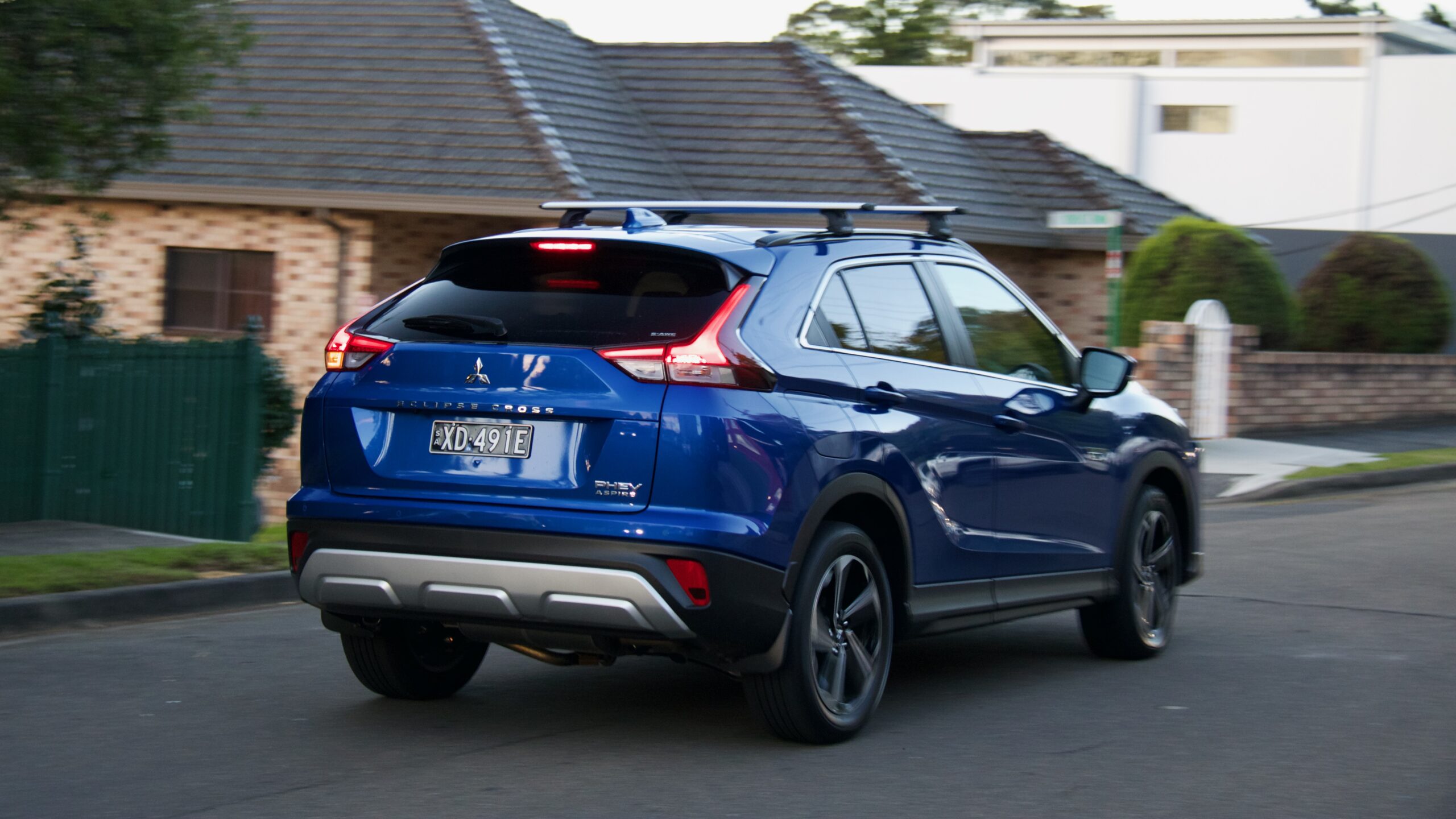
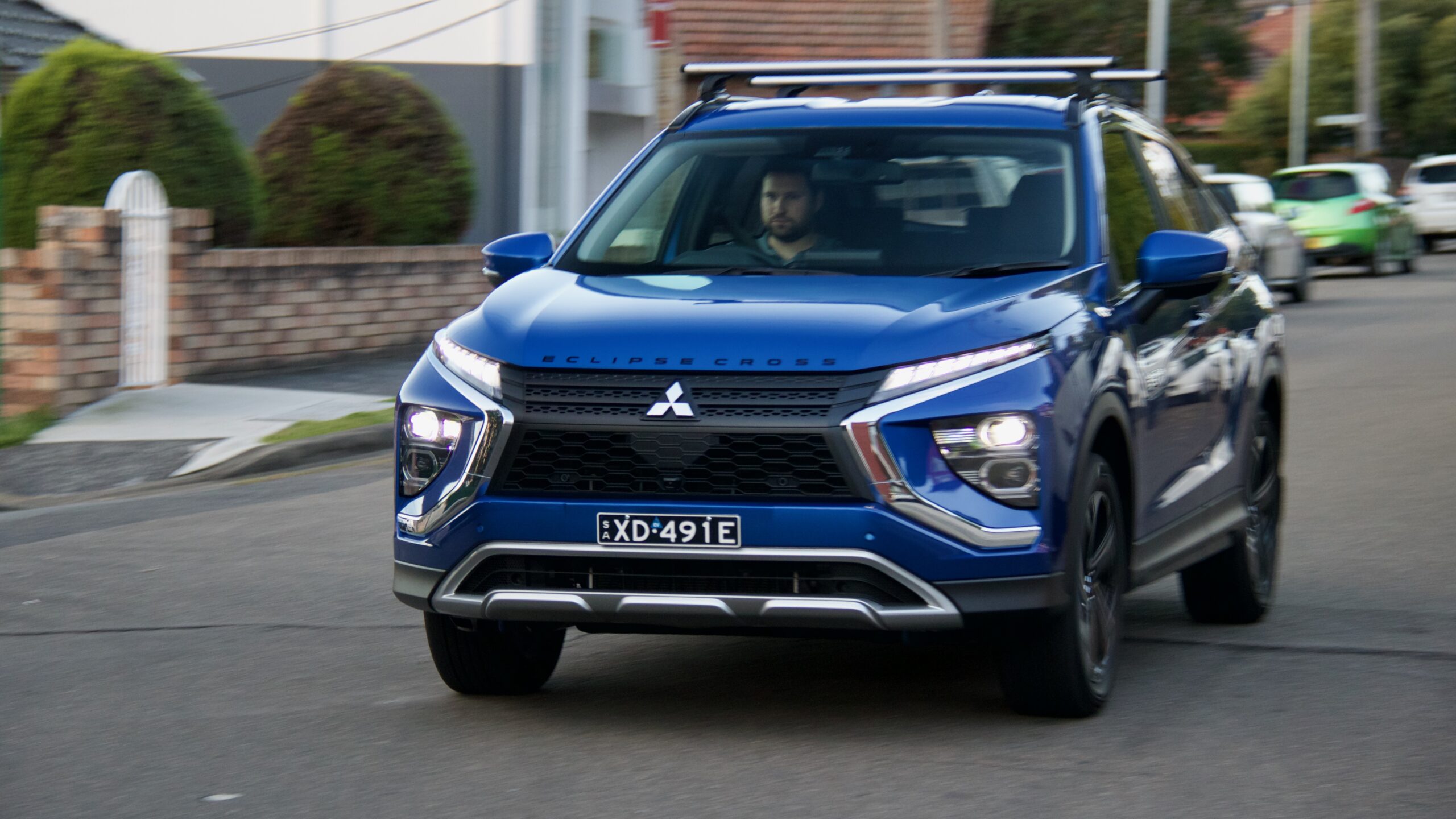
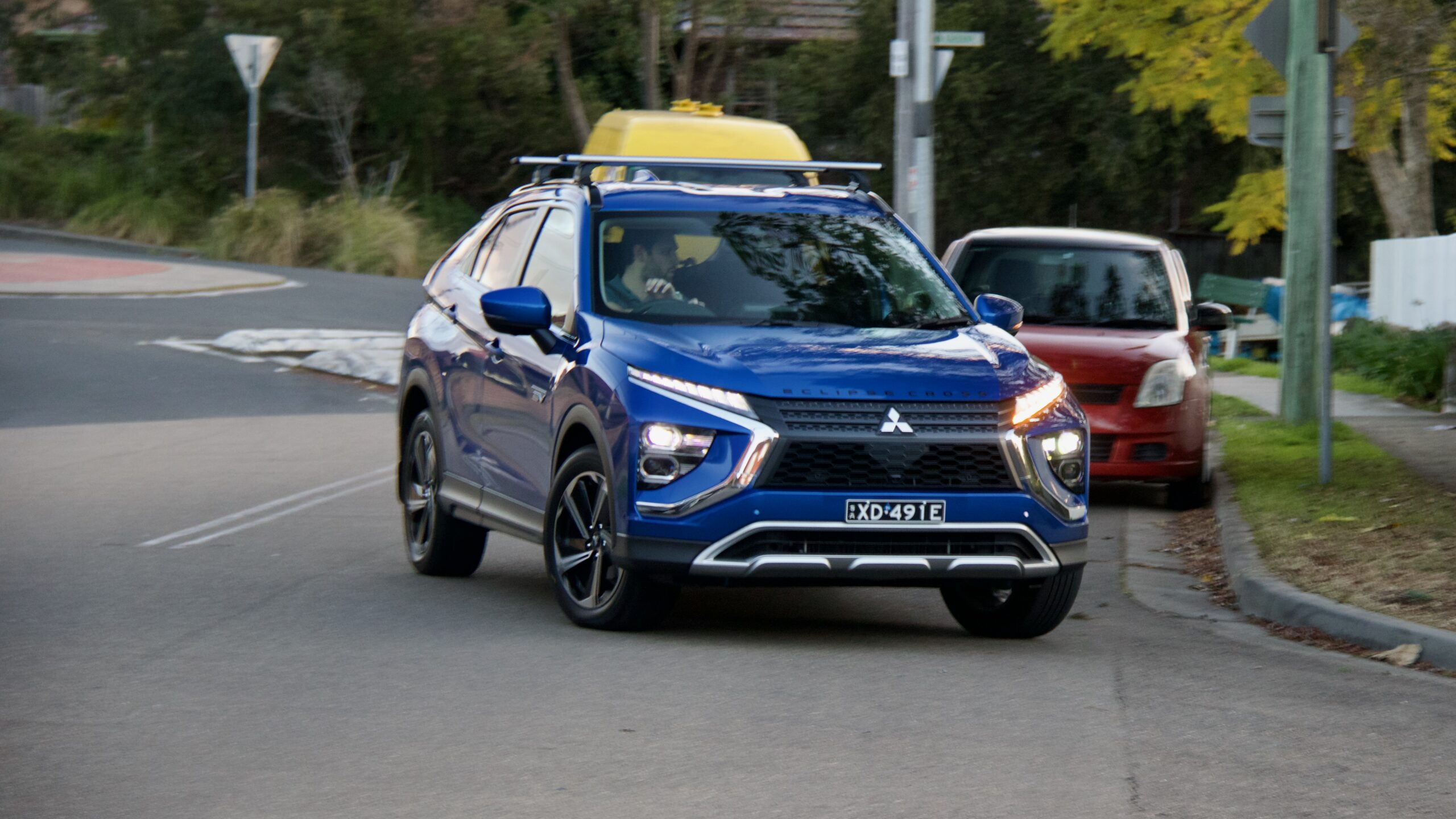
For regular people driving from A to B – especially in city or suburban settings – the Eclipse Cross PHEV provides a relatively serene environment thanks to its great noise suppression. Road noise levels are pleasingly low, and even when the petrol engine is switched on and warming up, it’s somehow pretty quiet, though its highway wind noise can be annoying thanks to the wedge shape. All-round visibility isn’t great, however, so it’s lucky that the Eclipse Cross has a useful 360-degree surround view camera and its active safety equipment, while a touch old feeling, is also handy to have.
Interior & Practicality: 7/10
While the drivetrain in the 2023 Mitsubishi Eclipse Cross Aspire PHEV is completely different to the regular petrol model, the interior is almost identical aside from the PHEV-specific gear selector, dials and eco menus in both the trip computer and infotainment system. Upon its release in 2018, it was clear that Mitsubishi tried to create a more premium cabin in the Eclipse Cross, but against the much newer and much nicer Outlander, it feels dated.
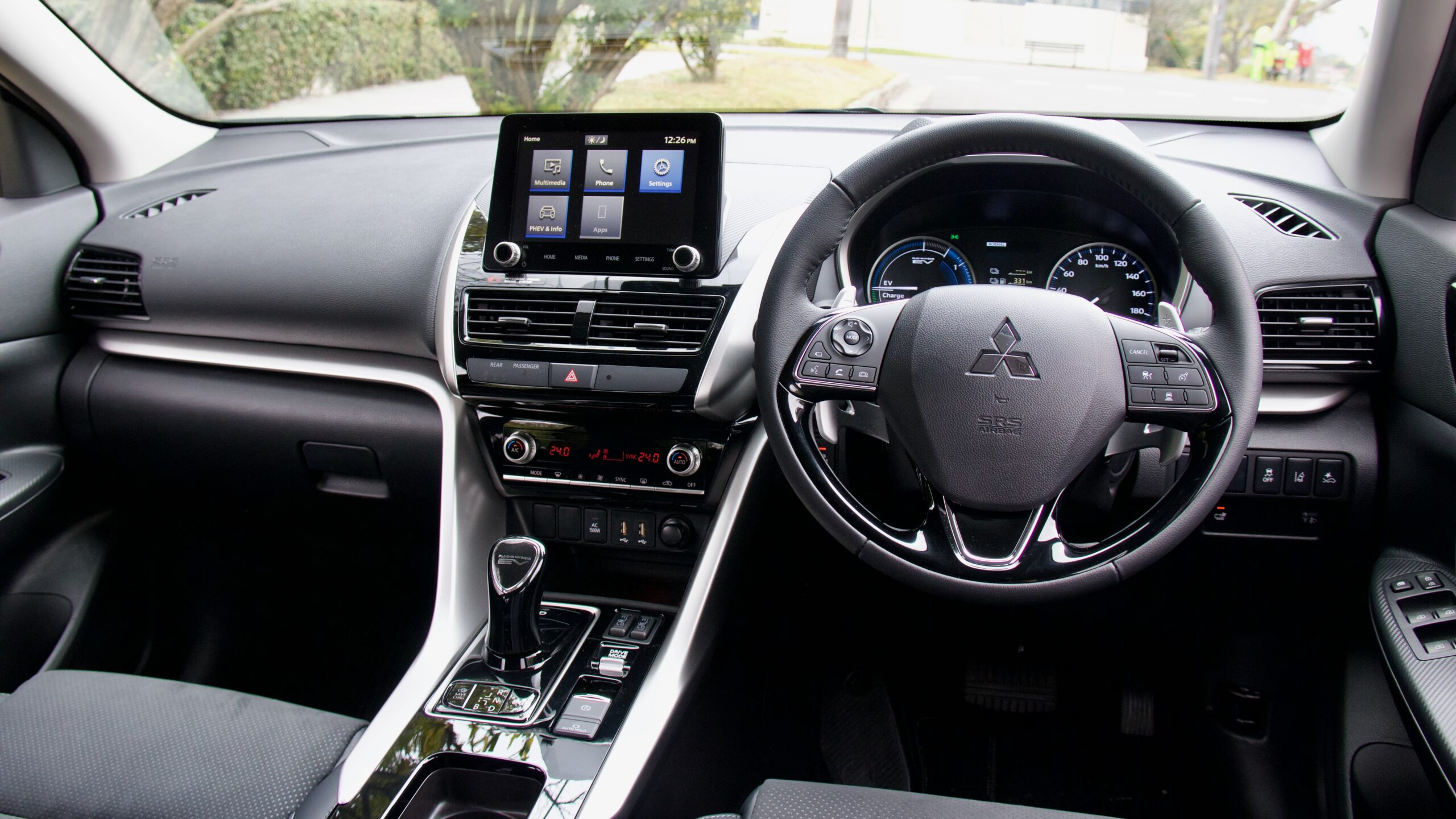
Material quality inside the cabin is good with a soft touch dashboard and door tops. The synthetic leather used on the bolsters of the seats and leather steering wheel are nice to the touch as well, while even the lower quality materials feel built to last. What dates the cabin is the use of old generation Mitsubishi switchgear, such as the clunky indicator and wiper stalks, window controls, old dials and the huge amount of buttons everywhere – an upgrade with the new Outlander’s switchgear would make it feel a lot more modern.
Centre of the Eclipse Cross’ dash is an 8.0-inch touchscreen with wired Apple CarPlay and Android Auto, and digital radio. The system, while quite easy to use, is a little dated and clunky now, while it can also be a bit slow at times needing a few presses of menus to open them. The eight-speaker sound system is surprisingly punchy, however with good bass levels. The 10.1-inch touchscreen in the MG HS is bigger but in the same boat as the Mitsubishi with a clunky and slow operating system that spoils it – at least the HS has a digital driver’s display as the Eclipse Cross does not, just a small and clunky trip computer screen with no digital speedometer.
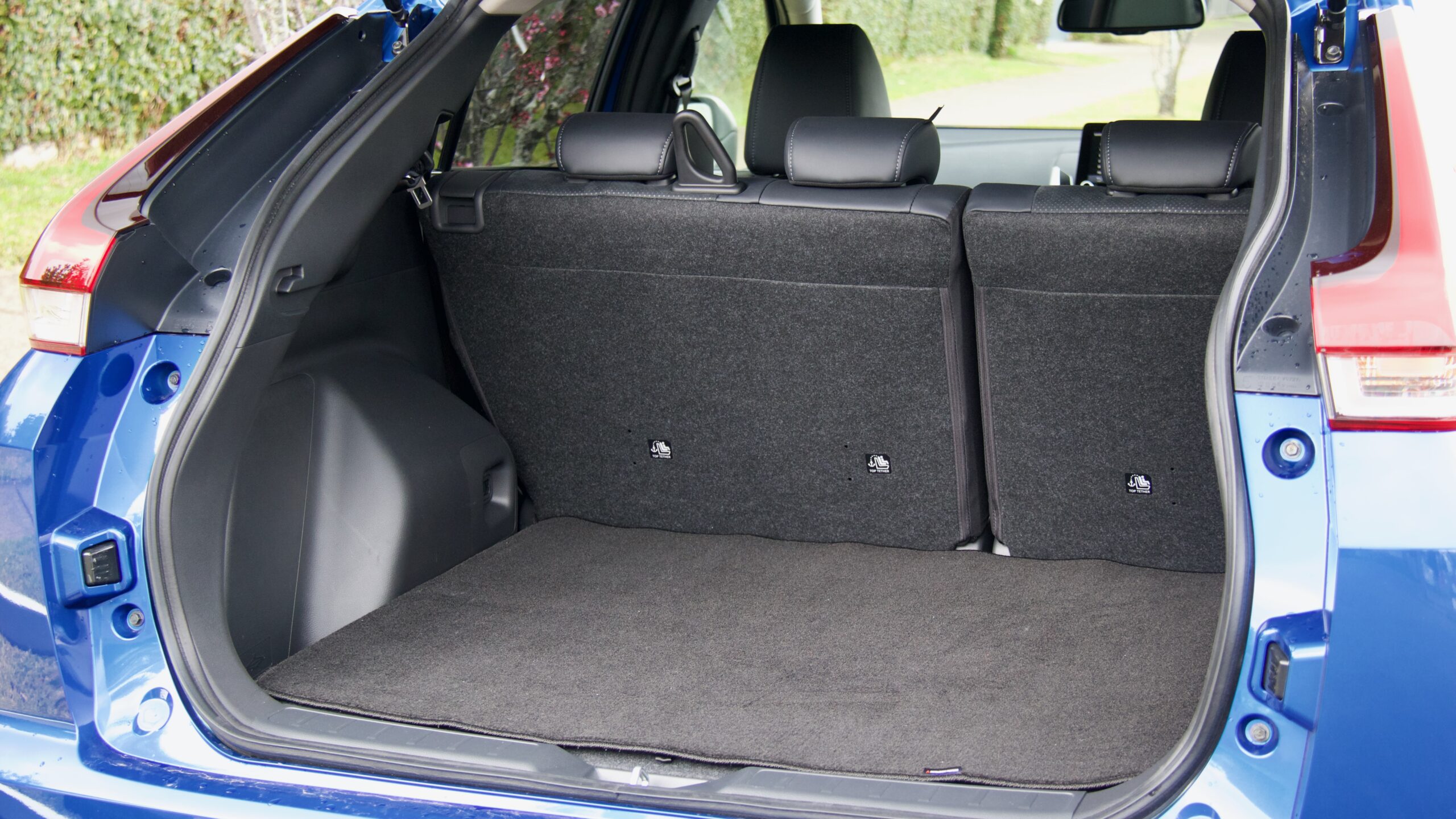
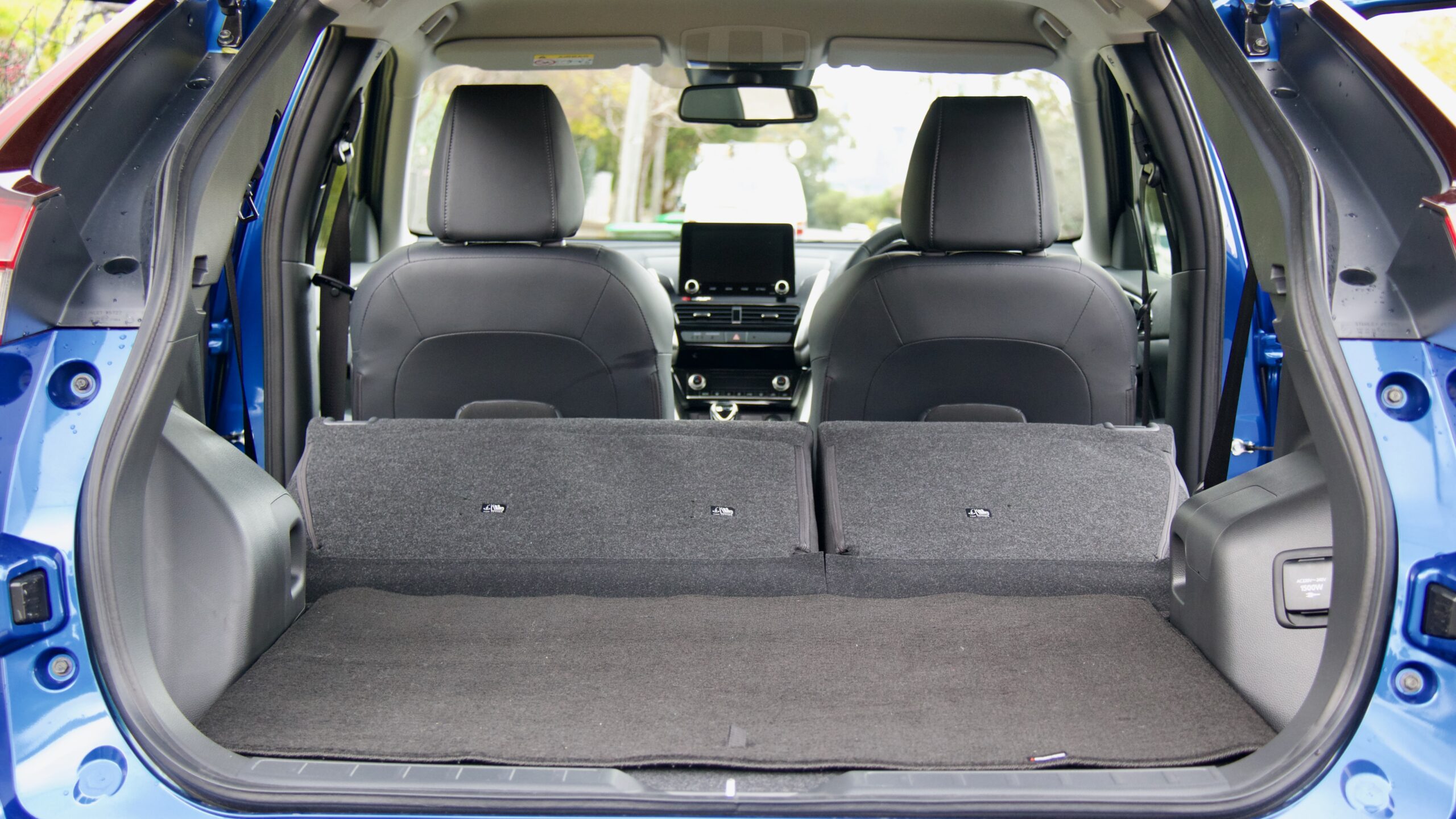
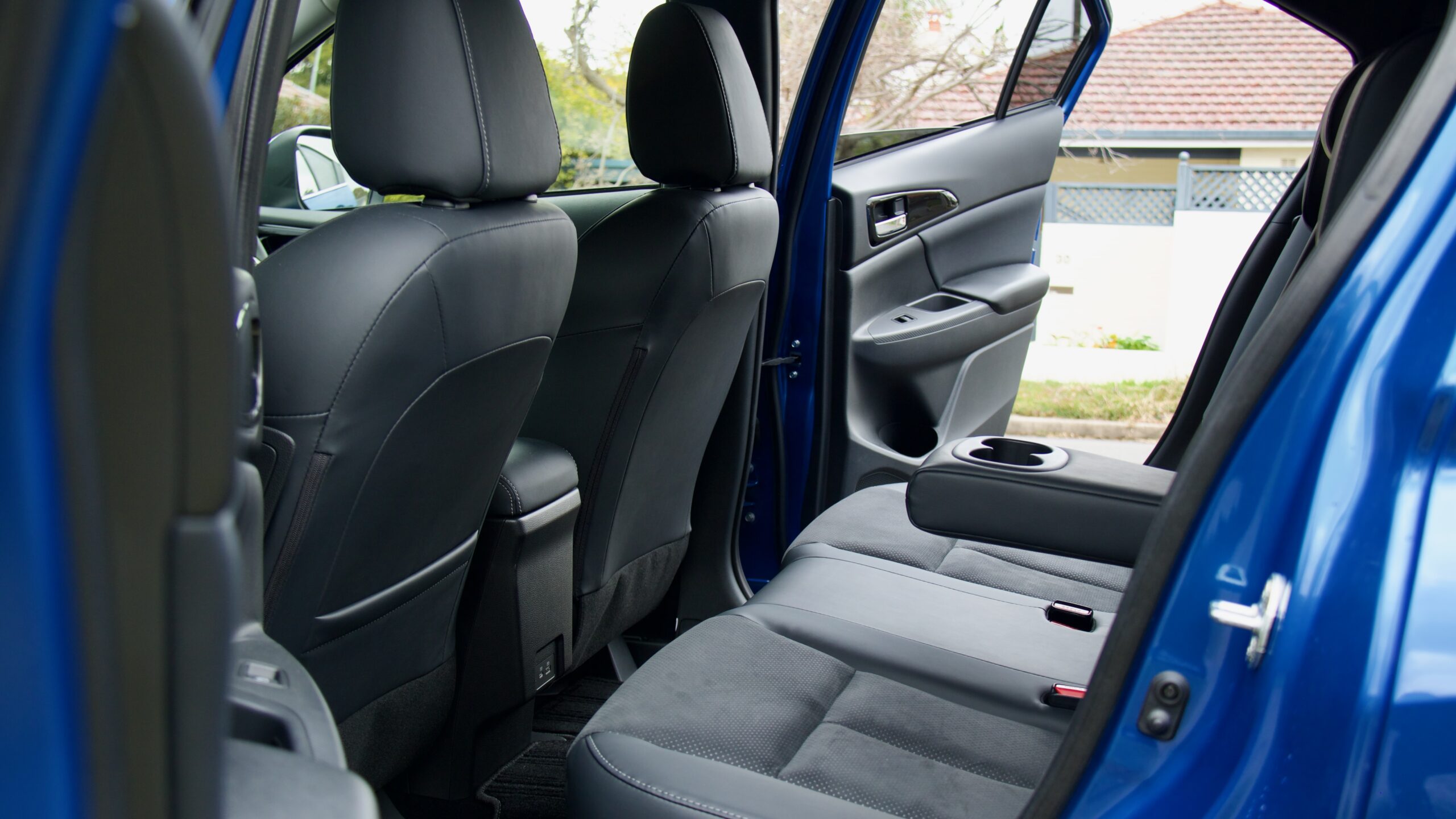
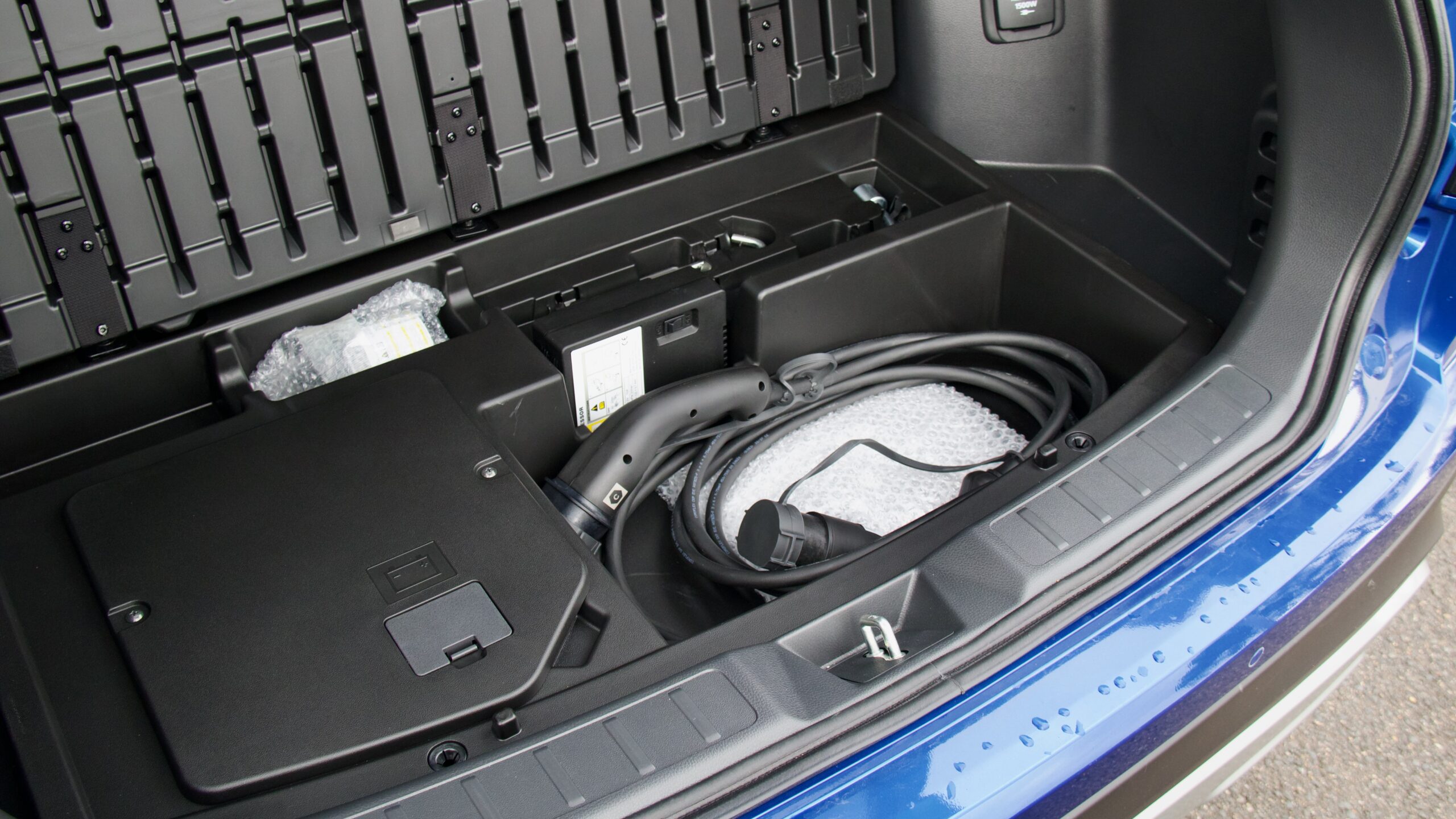
Get into the rear seat of the 2023 Mitsubishi Eclipse Cross and you will see that it is a reasonable place to spend time. It has a centre armrest with cupholders, one map pocket and door pocket cup holders. It misses out on is rear air vents, though it now has two USB ports (1xUSB-A and 1xUSB-C) for rear passengers to charge devices. The room on offer is reasonable, though six-footers won’t like the lack of headroom thanks to the sloping roofline and legroom for taller folks isn’t great. For child seats, there are two ISOFIX points, as well as three top-tether points.
The Eclipse Cross’s boot suffers with the PHEV battery mounted underneath the floor – it also has no spare wheel, just a tyre repair canister. While the regular model offers 405-litres of space, the PHEV’s boot measures in at 359L with the seats up and folding them unlocks just 626L, whereas the regular Eclipse Cross offers 1,172L with its seats folded. In comparison the MG HS plus EV offers up 451L and 1,275L of cargo space respectively. While there is some side storage and some under floor storage, as well as a 1500W AC socket, that’s it in the way of clever features.
Service & Warranty: 9.5/10
Mitsubishi offers a five-year/100,000km warranty for its new cars in Australia, which is extended to a 10-year/200,000km coverage if the car is serviced at a Mitsubishi dealership in that time and the battery is warranted for eight years or 160,000km, which is on par with other brand’s battery warranties. Mitsubishi’s roadside assistance lasts for 12 months initially, and a further 12 months’ is given with each dealer service – but only up to four years in total. In comparison, the entire MG HS Plus EV is covered by a seven-year/unlimited kilometre warranty and seven years of roadside assistance, and that’s regardless of where it is serviced.
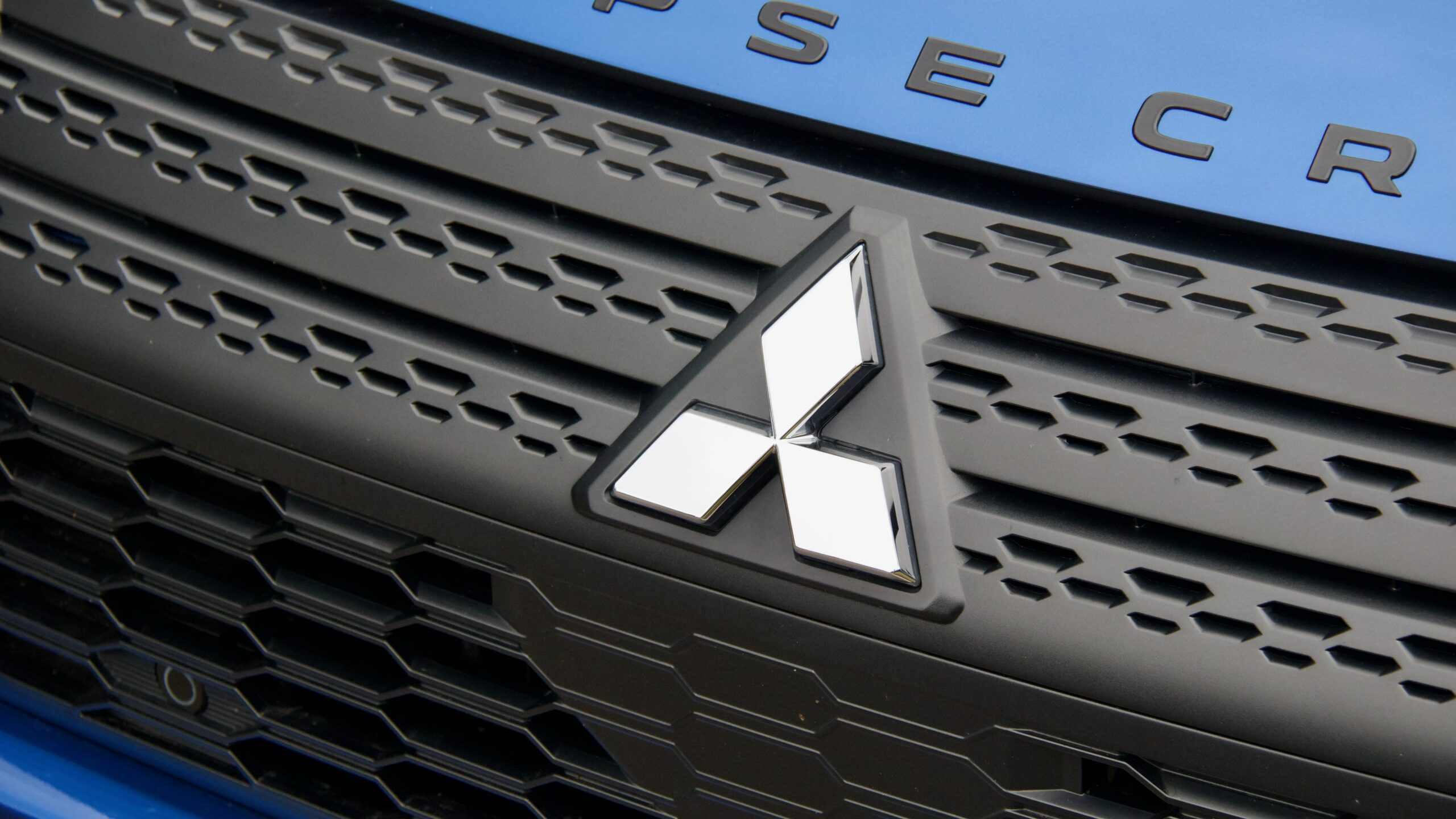
The 2023 Mitsubishi Eclipse Cross Aspire PHEV requires servicing every 12 months or 15,000km, which is the same as the petrol Eclipse Cross. The cost of servicing the Eclipse Cross PHEV over five years/75,000km is $2,185 (an average annual service cost of $437). The MG will need to be serviced more often as its intervals are 5,000km less at 10,000km and the cost to service the MG HS plus EV over five-years or 50,000km is a lesser $1,692 (average yearly cost of $338.40), though buyers travelling distances needed for more servicing annually will obviously experience higher servicing costs.
2023 Mitsubishi Eclipse Cross Aspire PHEV: 7.5/10
The 2023 Mitsubishi Eclipse Cross Aspire PHEV – much like other PHEV’s – makes sense if you have access to a charger at home or at your workplace. Only then do you start to see the benefits of the PHEV system as when charged, it can be quite efficient with an achievable 55km of all-electric range that easily covers the vast majority of Australians’ daily commutes. The aftersales package of the Eclipse Cross is also quite appealing, while it’s reasonably practical and offers a lot of standard equipment for the money. Almost uniquely on the new car market too, the Eclipse Cross PHEV can be DC fast charged.
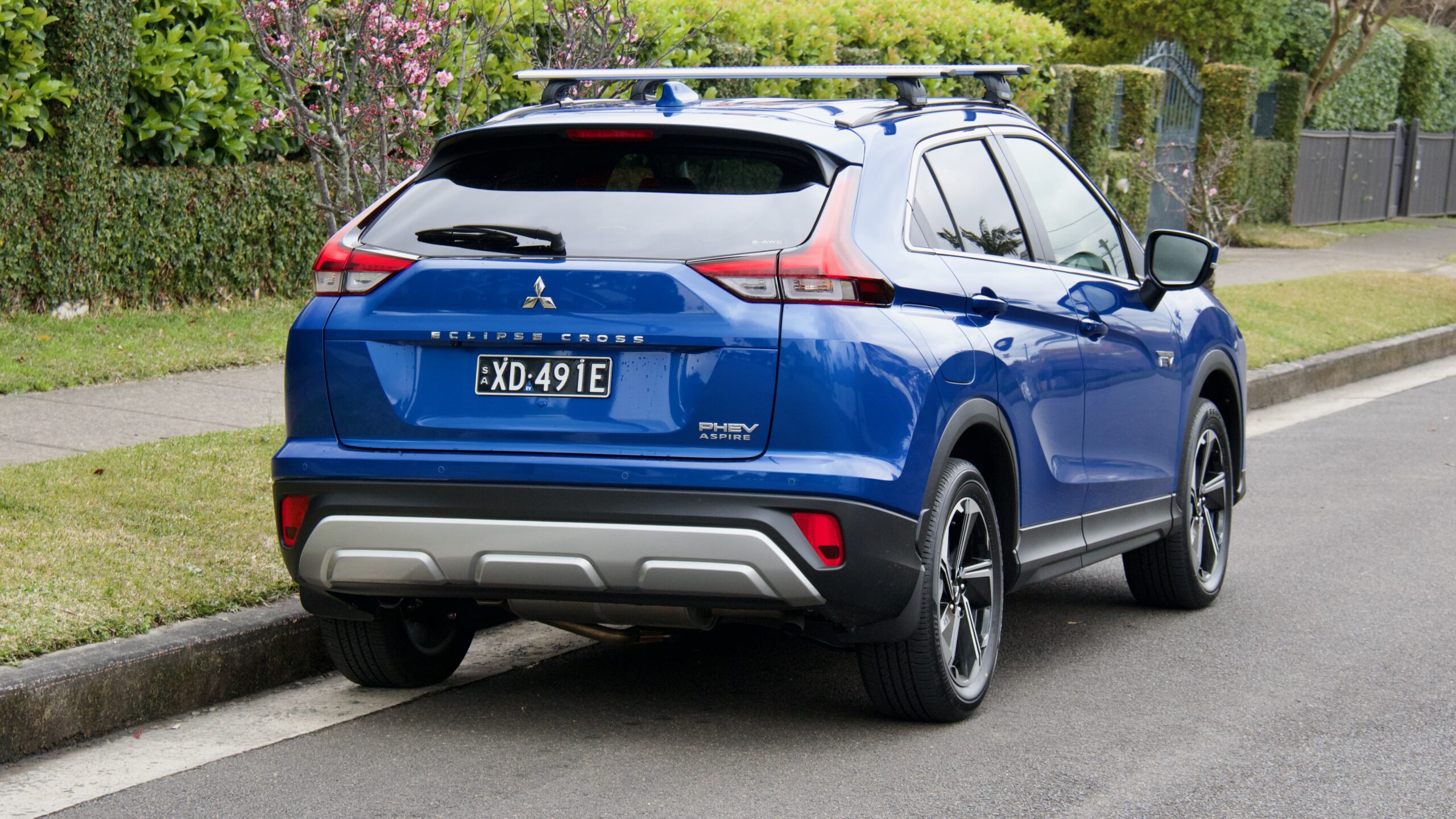
Unfortunately, there are a few let downs for the Eclipse Cross PHEV. The interior needs to be updated to make it more modern, there’s no digital speedometer, it’s not a keen handler like Mitsubishis of old and it is expensive to buy, especially in comparison with its petrol-powered sibling. As with all other PHEVs, it can be quite inexpensive to run but ultimately, it’s not cheap to buy and while we like the Eclipse Cross at DiscoverAuto, we’d also be checking out something like a Hyundai Kona Hybrid because it’s a lot more modern and while it’s not a PHEV, it’s still great on fuel. But if a PHEV must be had, then the Eclipse Cross Aspire PHEV offers a reasonable amount – just make sure you consider all your options first.
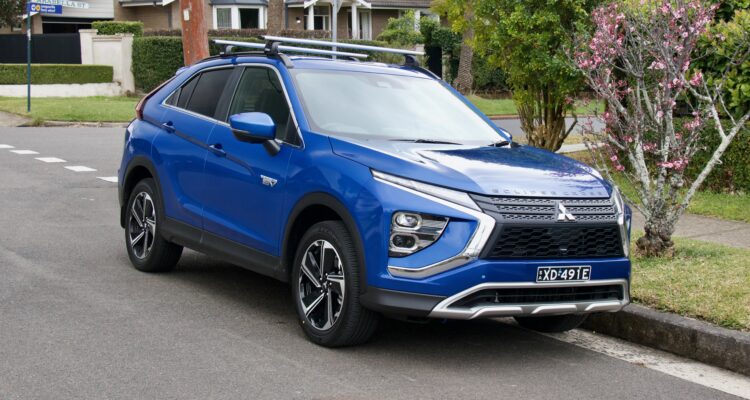
Leave a Reply